This is a roundup of the first month of my shared travels through Brazil and South America, in the form of a journal or diary. I tried to write down the highlights of almost each day, as a means of remembering special events and to share with the people who care. This post turned out to be quite long, with the personally more interesting and intuitive bits appearing near the end, as I became more relaxed and immersed in the traveling experience. Feel free to skip boring parts or to just look at the pictures ;)
30/31 May, Sao Paulo
The people at Olah! hostel were very helpful and accommodating. They picked us up at the airport and had to wait about two hours for us, due to a delayed flight. Then they even offered to take us to the supermarket at 12 o’ clock at night.
In general Brazillians seem friendly and eager to help. We felt as though we stood out as travelers but during our first day walking in Sao Paulo, three different people approached us asking questions (probably for directions) in Portuguese, so perhaps we blended in better than imagined.
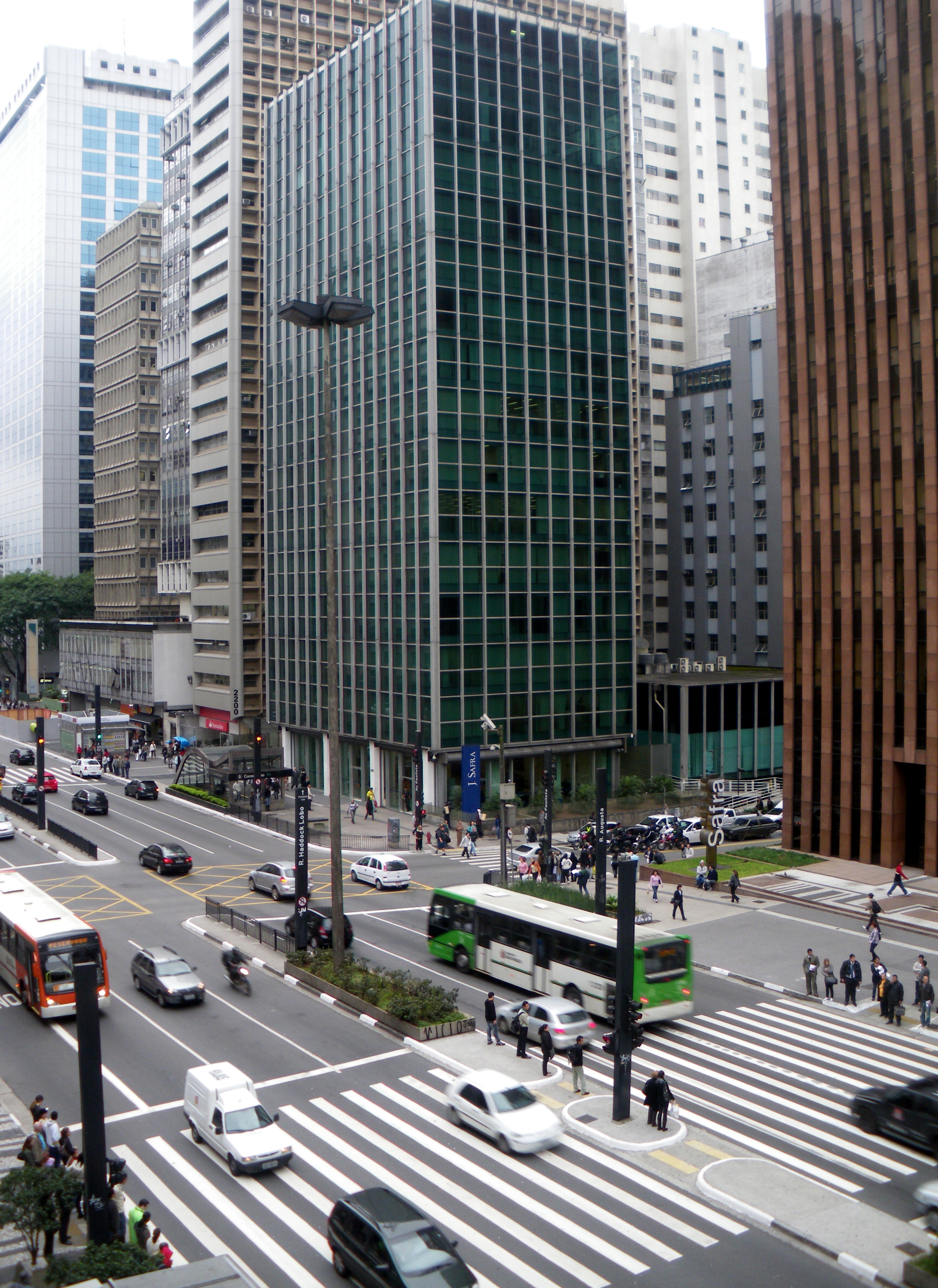
1 June
We went to Museu de Arte de S.Paulo (MASP), which provided free entrance on Tuesdays. They had an exhibition of collages from the German artist Max Ernst with a well written breakdown of his life and interpretations of the different pieces. We made our own interpretations of his work, which largely consisted of critiques of the abuse of power by the elite (represented by the French bourgoise), but also of men over woman.
We left the museum inspired by Ernst’s creativity, his well-traveled and bohemian lifestyle indicating that creative lifestyle design is nothing new. Some people have been traveling the world and making a living doing what they love for a long time already.
2 June
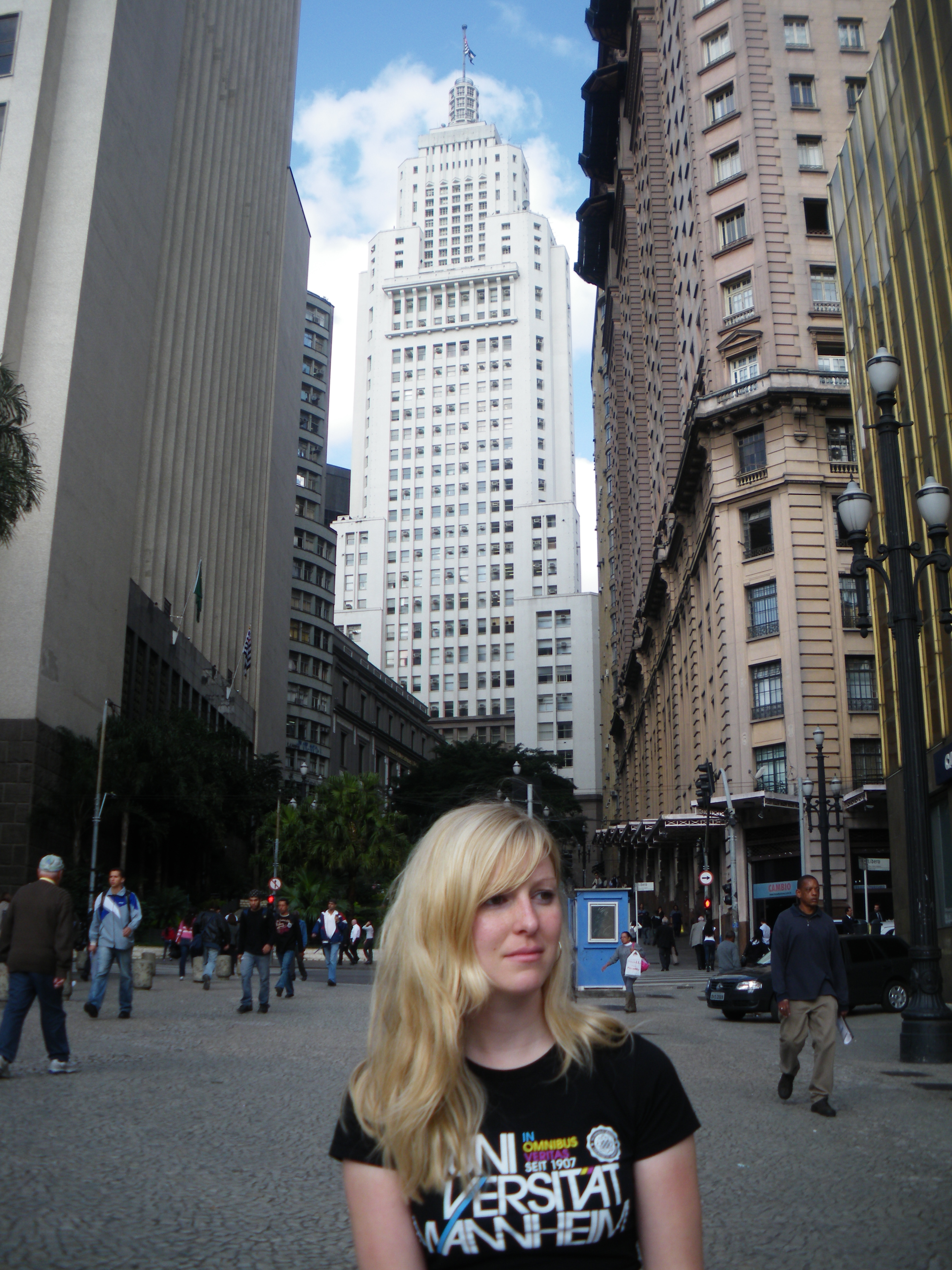
The sight of vagrants and destitutes lying on the dirty sidewalk and public spaces in the center of Sao Paulo was quite jarring, and something I was not used to seeing anymore since spending a year and half in Germany. They were in all likelyhood just sleeping, but one couldn’t be sure. One might have been lying there dead with people just passing by unaware.
We went to the famous Galeria do Rock, a 6 story mall dedicated to Hard Rock and Heavy Metal culture, where we met Aggnes, who works with Sepultura and is a volunteer for the Sea Sheperd organisation.
Up at the top of the Banespa building, one gets an impression of how big this city really is. Buildings and skyskrapers dot the landscape extending as far as the eye can see.
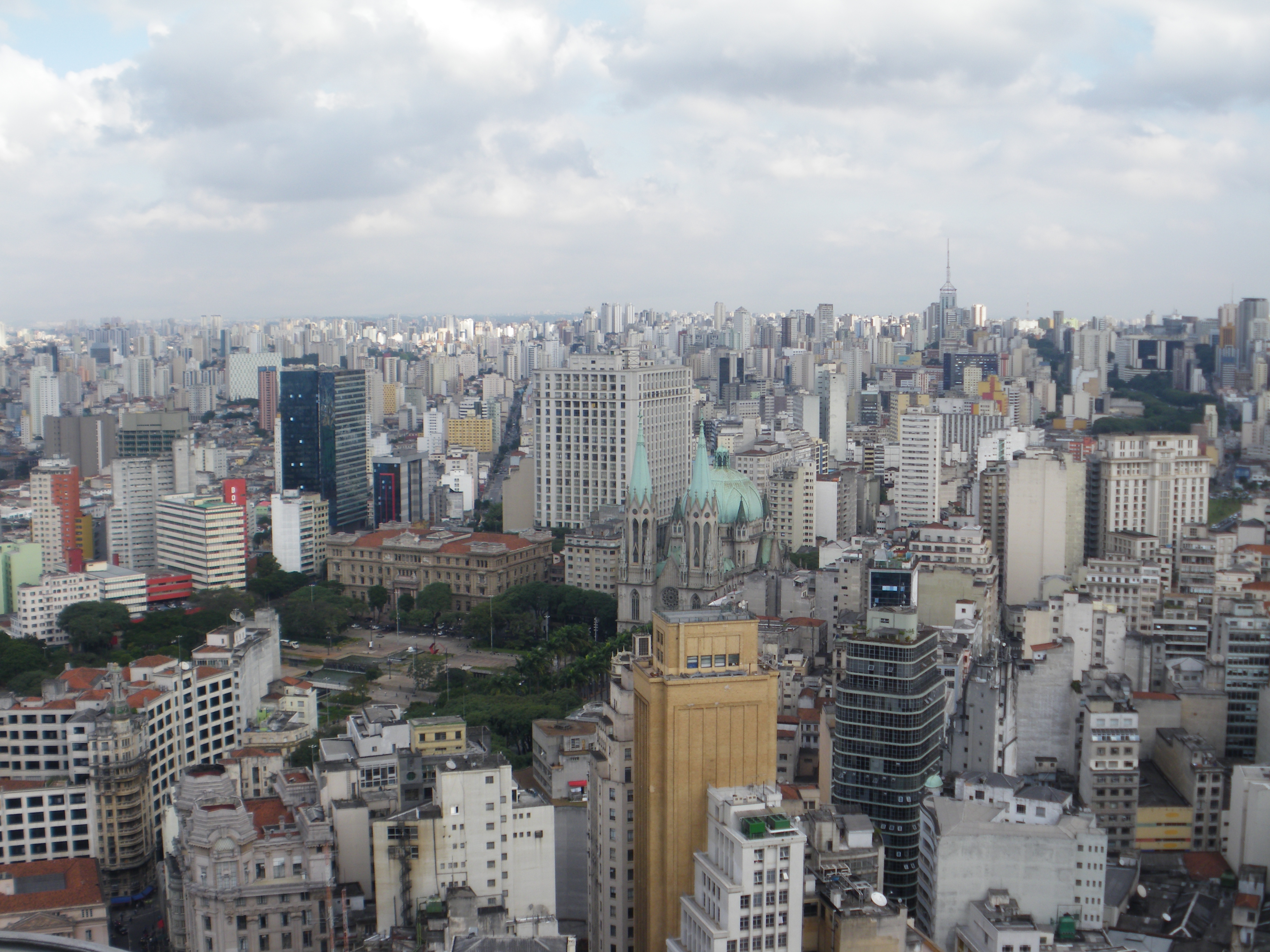
June
On Thursday we met my friend Witek (who coincidentally happens to be in Sao Paulo) and his Brazilian friend Selena. We went together to Parque Ibirapuera, the biggest park in Sao Paulo. It was a day of relaxing in the park and drinking coconut water while Witek and I discussed some of the parallels between South Africa and Brazil. Later Selena took us in her car for a trip around the city, explaining the sites, presenting it to us in a completely different light.
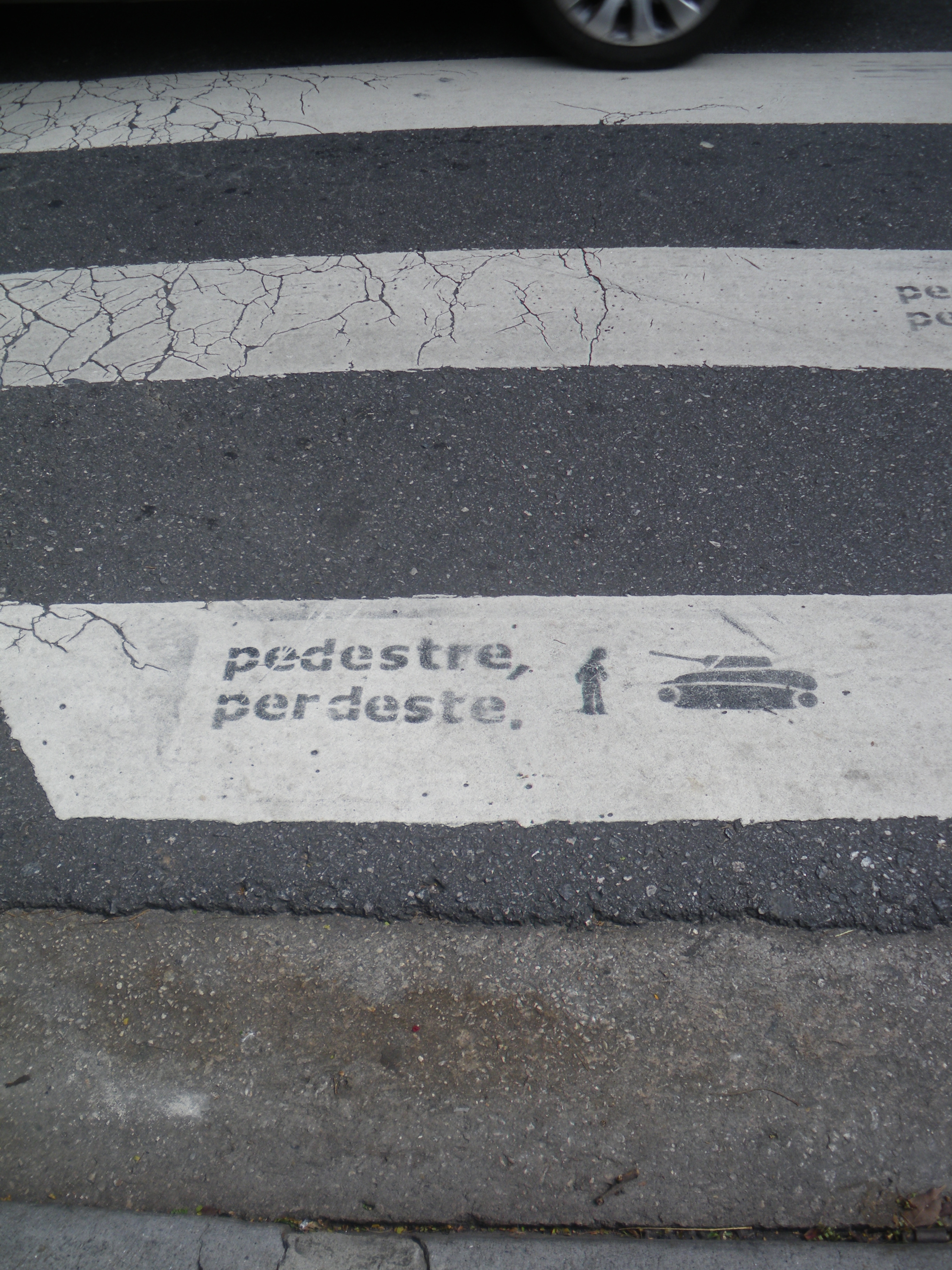
4 June, Rio de Janeiro
We take the bus, Expresso do Sul, to Rio de Janeiro. We opt for Executivo, the mid range option and are pleasantly surprised with a very modern and comfortable interior.
Upon arrival in Rio, we are a bit surprised with how poor and unkempt the neighbourhoods look. We drive past favela after favela and everywhere are scribbles and grafiti. A lot of the grafiti in Sao Paulo were really very impressive murals, but our first impression of Rio is that it’s mostly gang signs and scribbles. Every inch seems to be tagged. Sometimes places that are seemingly impossible to reach are marked, such as the 3rd stories of buildings and on the sides of bridges.
Later at the hostel we had Caipirinha night, lots of fun and a good time to meet other travelers. I spent some time with an American traveler of (North-)Korean descent, discussing the expressiveness of the German language. He was suitably impressed ;)
5 June
We took a walk to Botafogo and Flamengo beach with Niall, an Irishman we met the night before. The weather is pretty crap, windy and rainy, but we’re all in a comparatively good mood and it’s fun to explore Rio for the first time.
On Botafogo beach, Brazillians are playing American football (which was a surprise) and an old guy is doing amazing tricks with a soccerball.
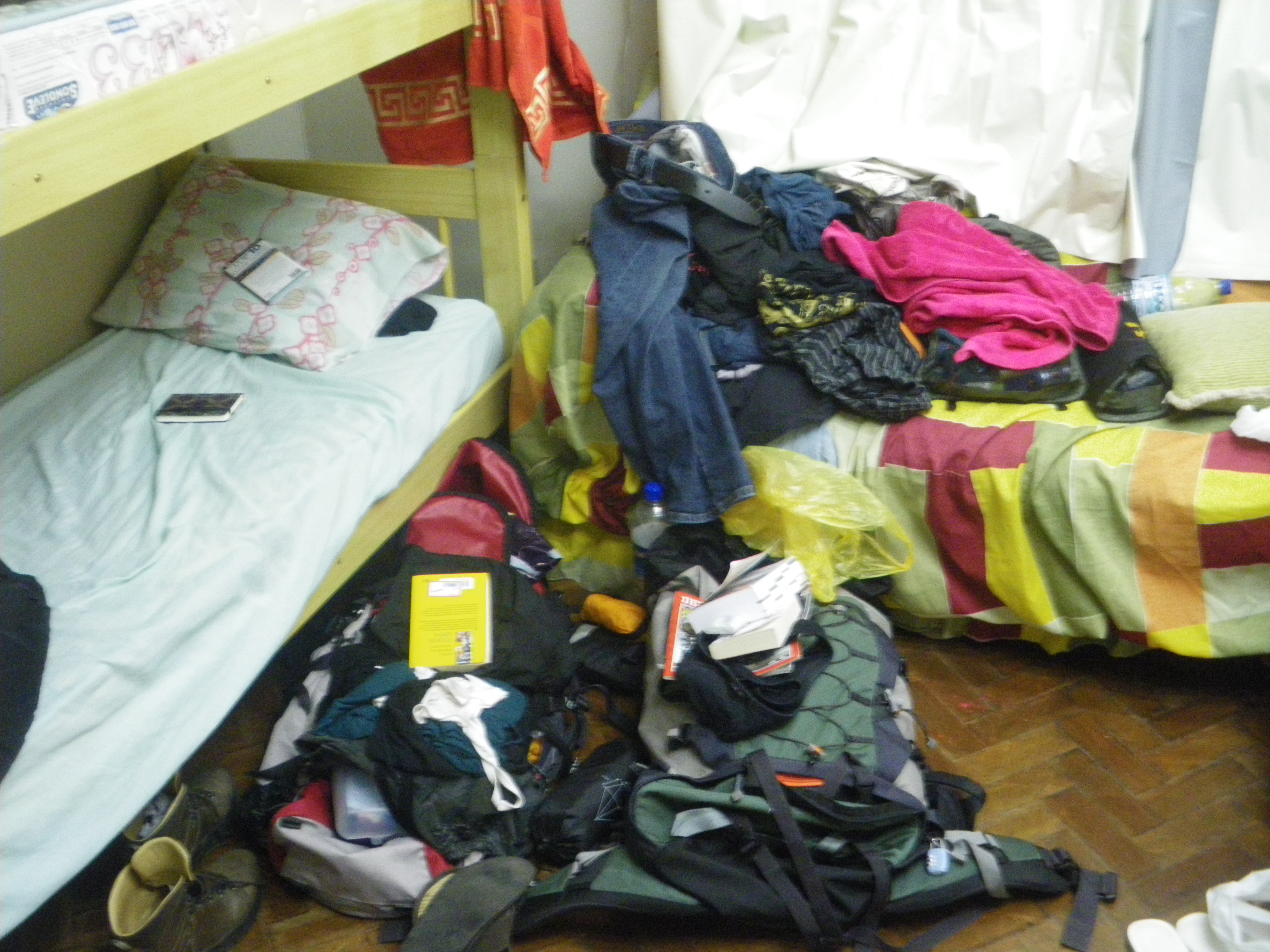
We again drink coconut water, agua de coco, this time with a straw straight out of a cooled coconut.
Our backpackers was nice at first glance, but we soon realize that we are two of almost 40 people squeezed into the place.
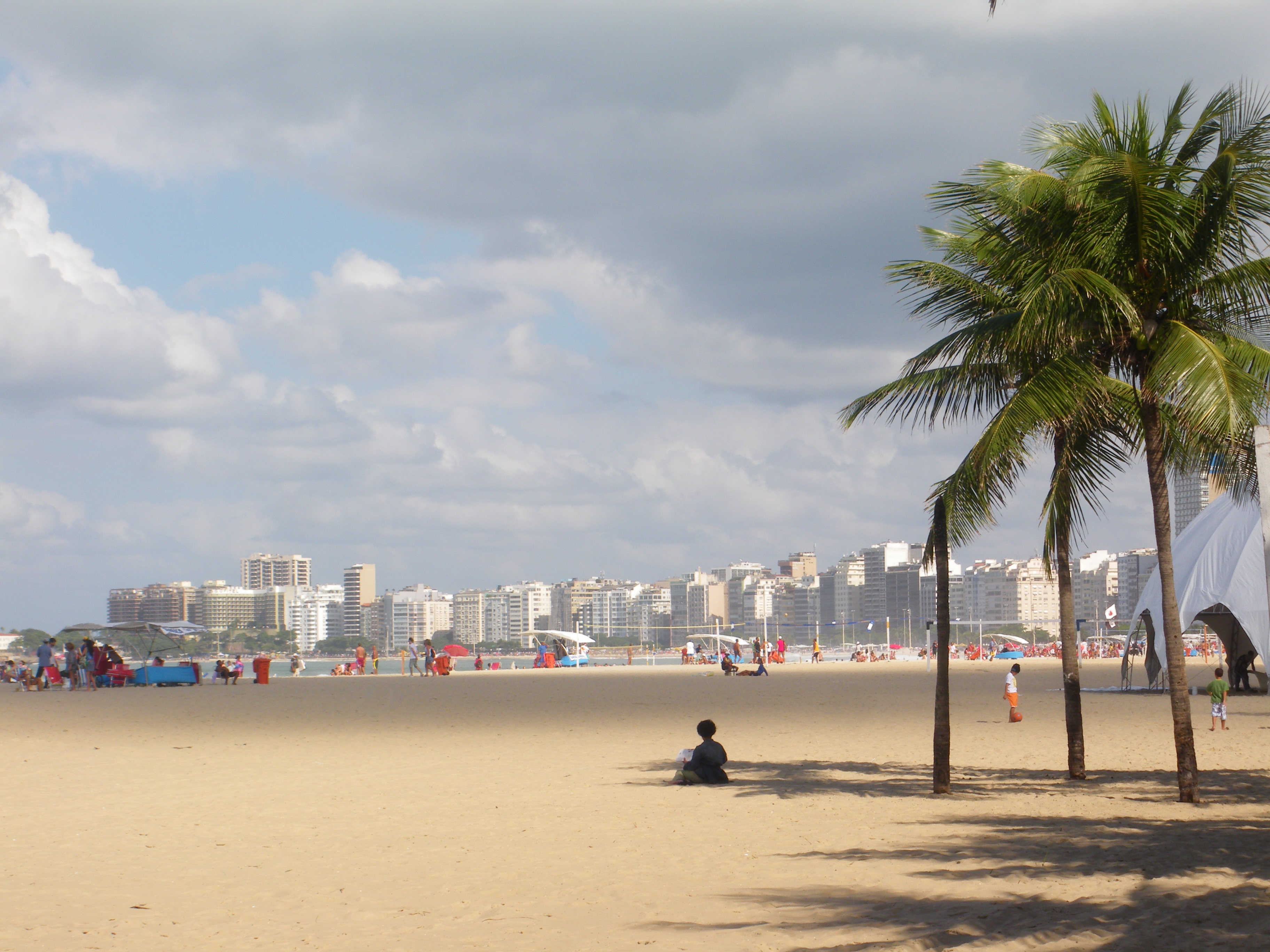
6 June
Today is Sunday and we plan to go to the Hippie market in Ipanema. First we walk to Copacabana beach. It’s still a bit windy but it’s nice and warm and there are lots of people on the beach.
So far Rio seemed quite poor and unkempt, but in Copacabana beach it’s like a world apart and we can see why it’s so famous. The official uniform for Brazillian men seems to be boardshorts and nothing else. The women wear hotpants with small tops or small dresses.
The Hippie market was a very nice surprise. There were lots of beatiful handmade leatherware, such as deocrated world maps, bowls, belts and armbands. Also jewellery and dresses. We saw very little kitsch tourist trinkets, and the market seemed to live up to its Hippie name.
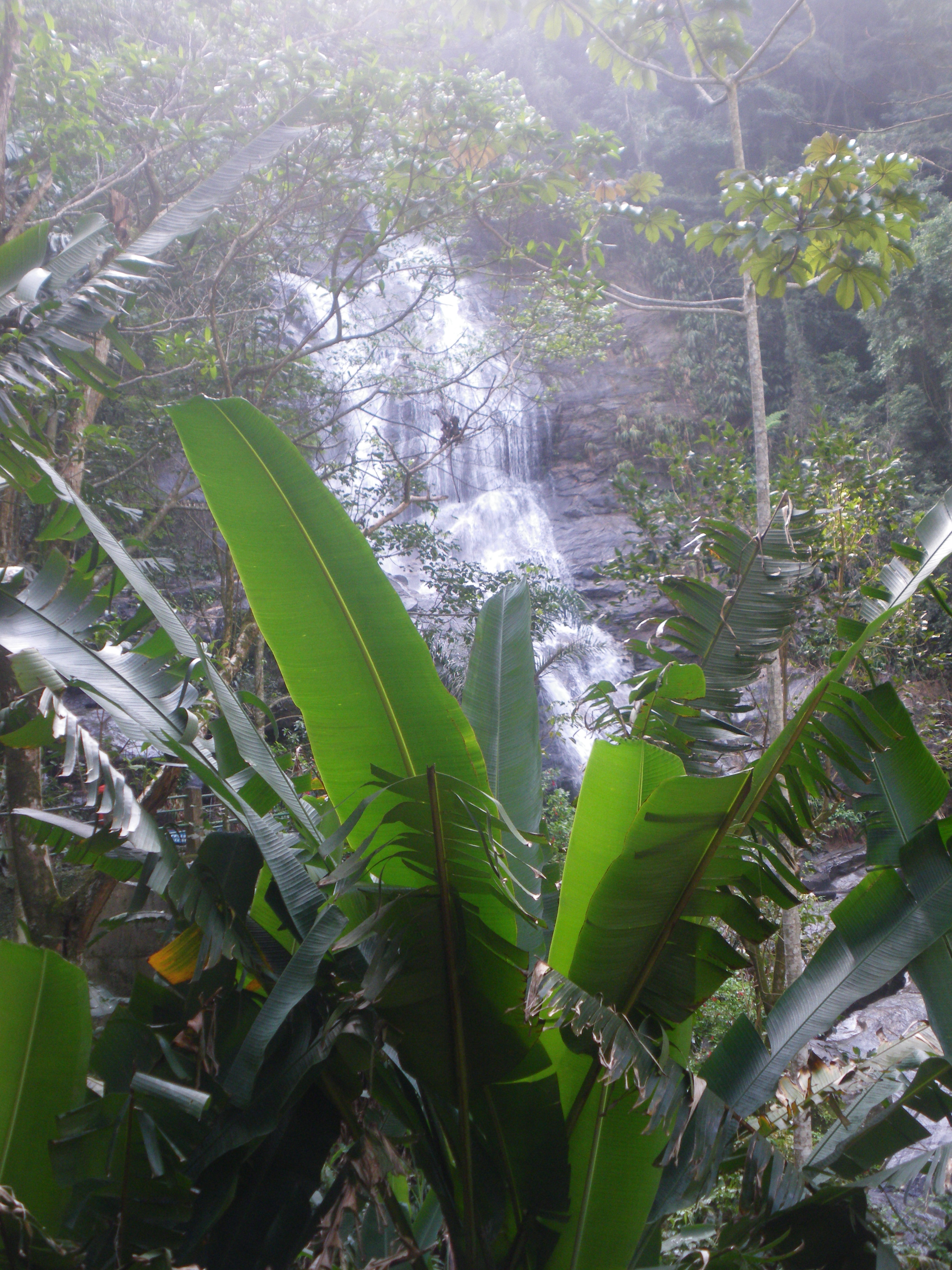
7 June
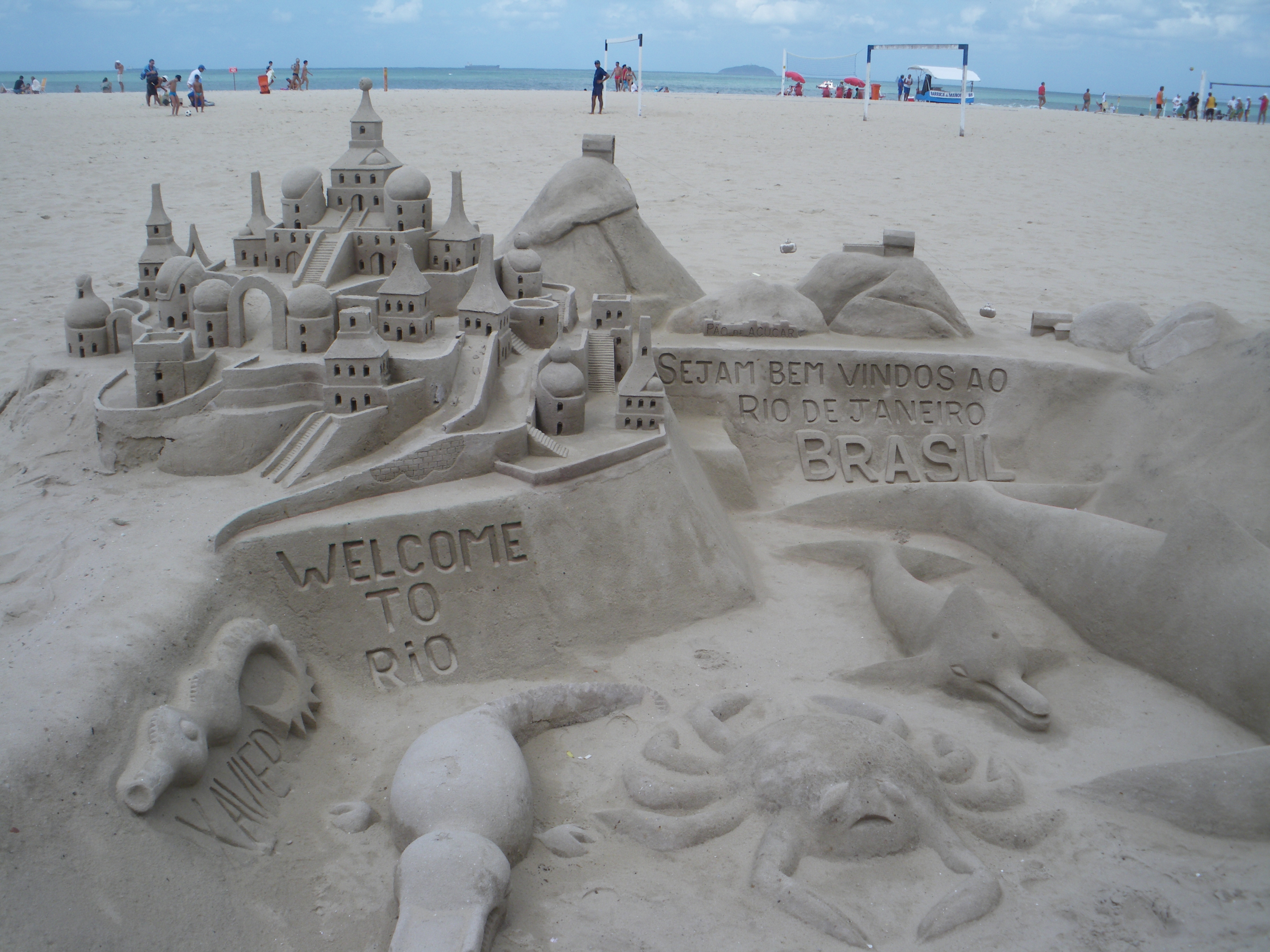
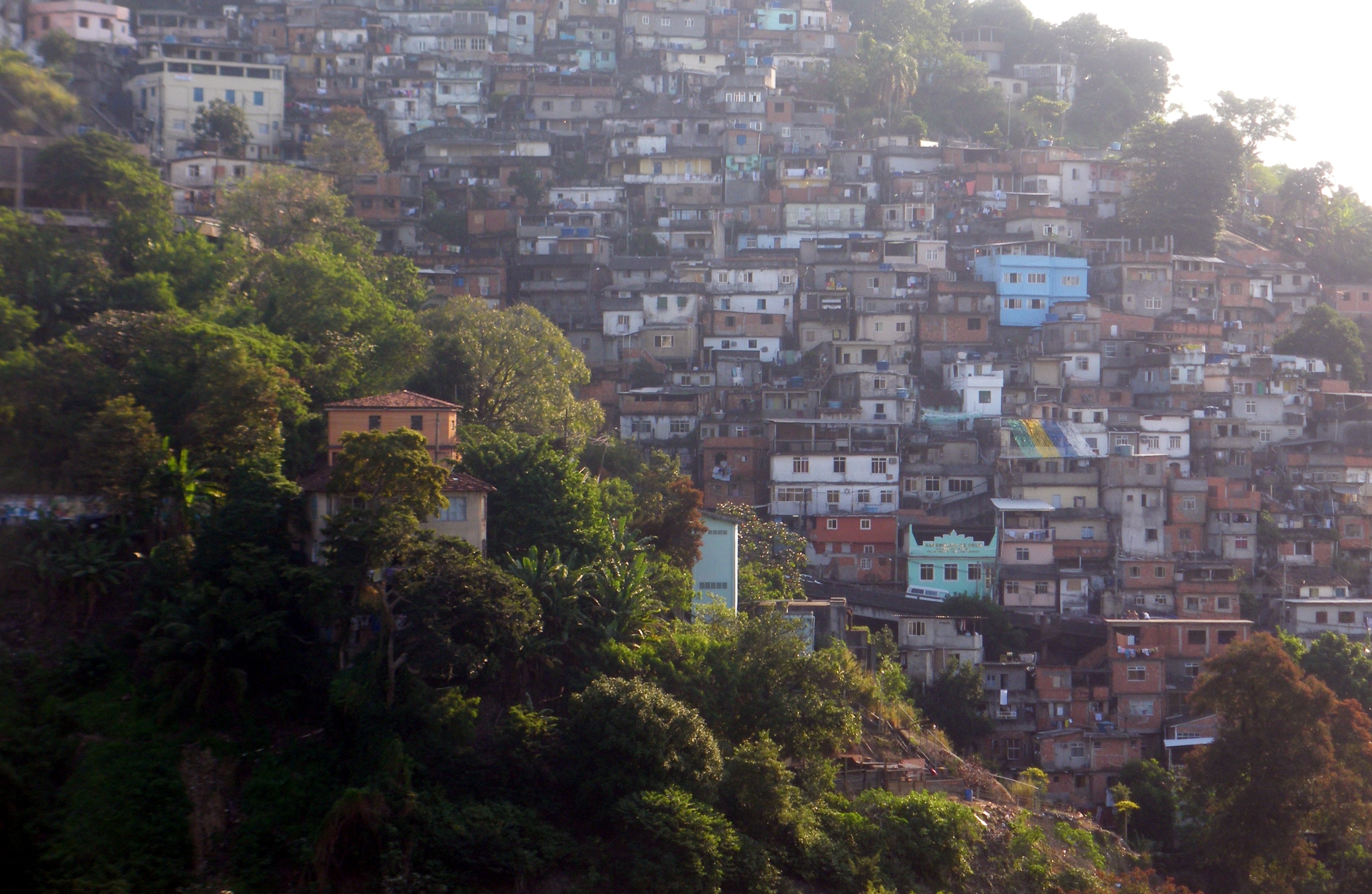
We want to walk to Tijucaforest, but don’t reach it and instead go to the Botanic gardens. The botanic gardens were 5 Reais to enter, which in our opinion didn’t make it worthwhile, as it was relatively boring. The whole of the not very big park was filled with workers cleaning up and building paths, to the point of absurdity. We felt that the park already had too many paths and that it was just like any other park, and not what we expected from botanical gardens.
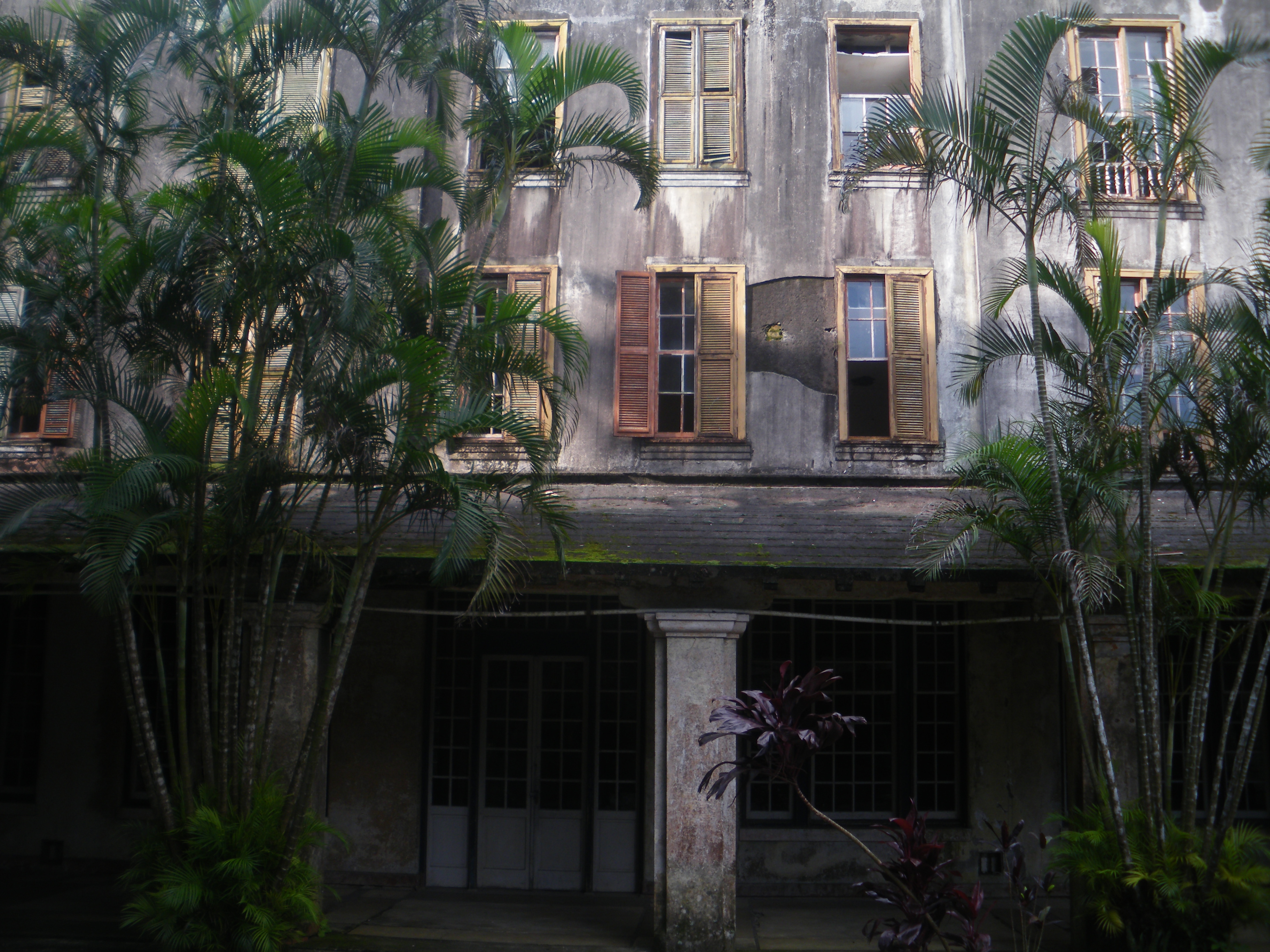
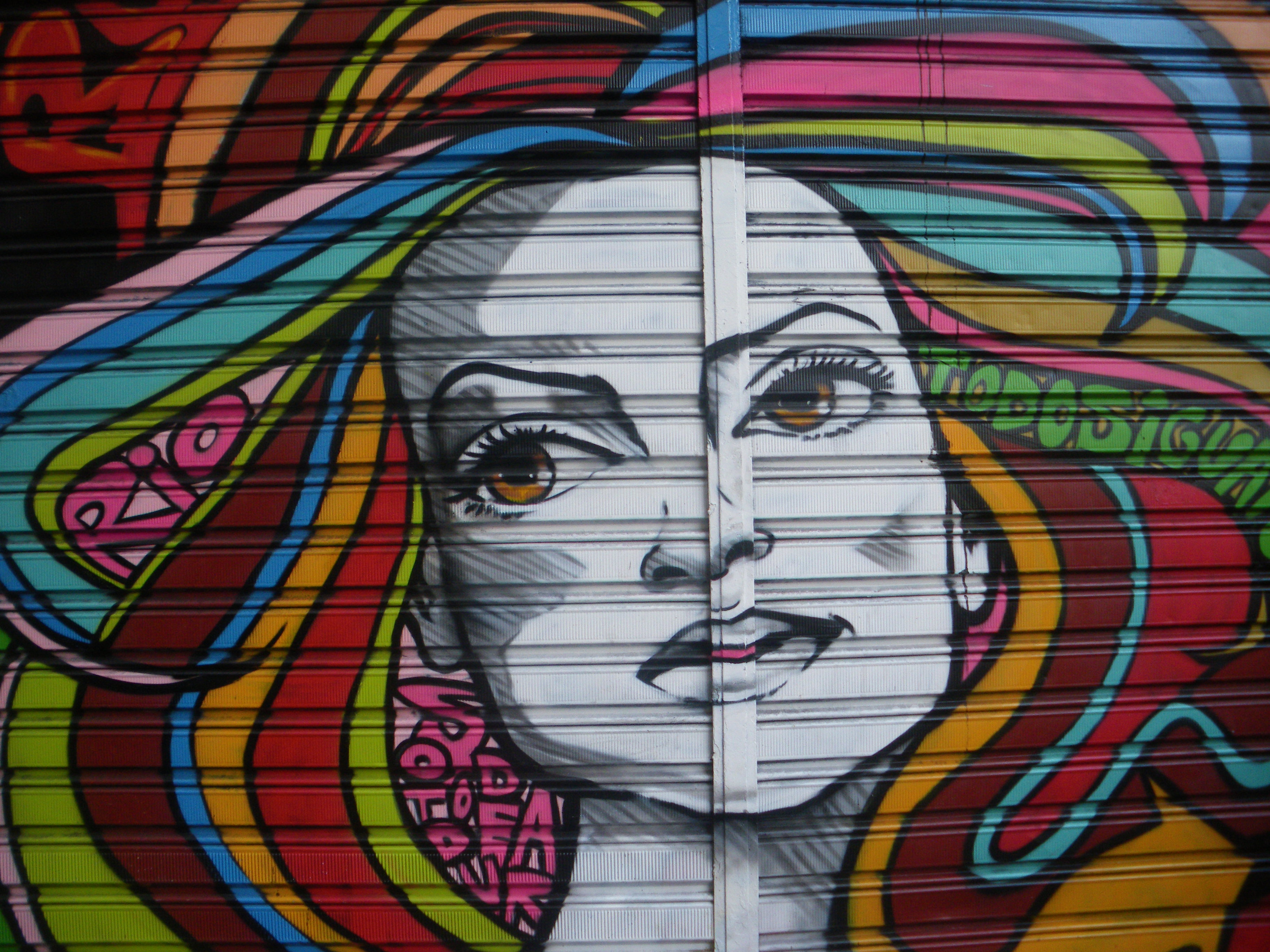
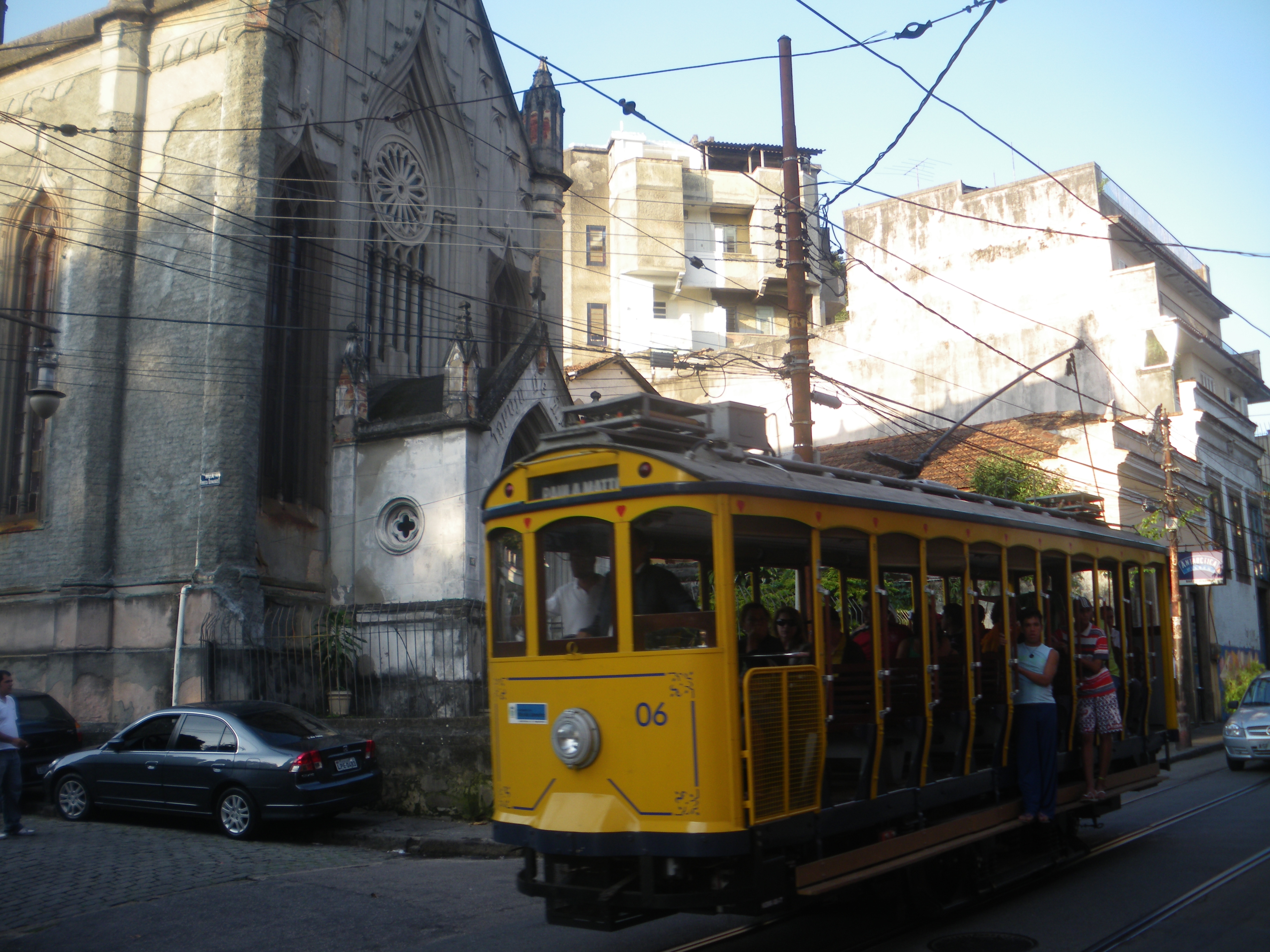
That night we bought what we thought was red wine. Upon drinking it, we realised though that it was very sweet and must have been some mix. It tasted like a mix of red wine and Fanta grape. Weird…
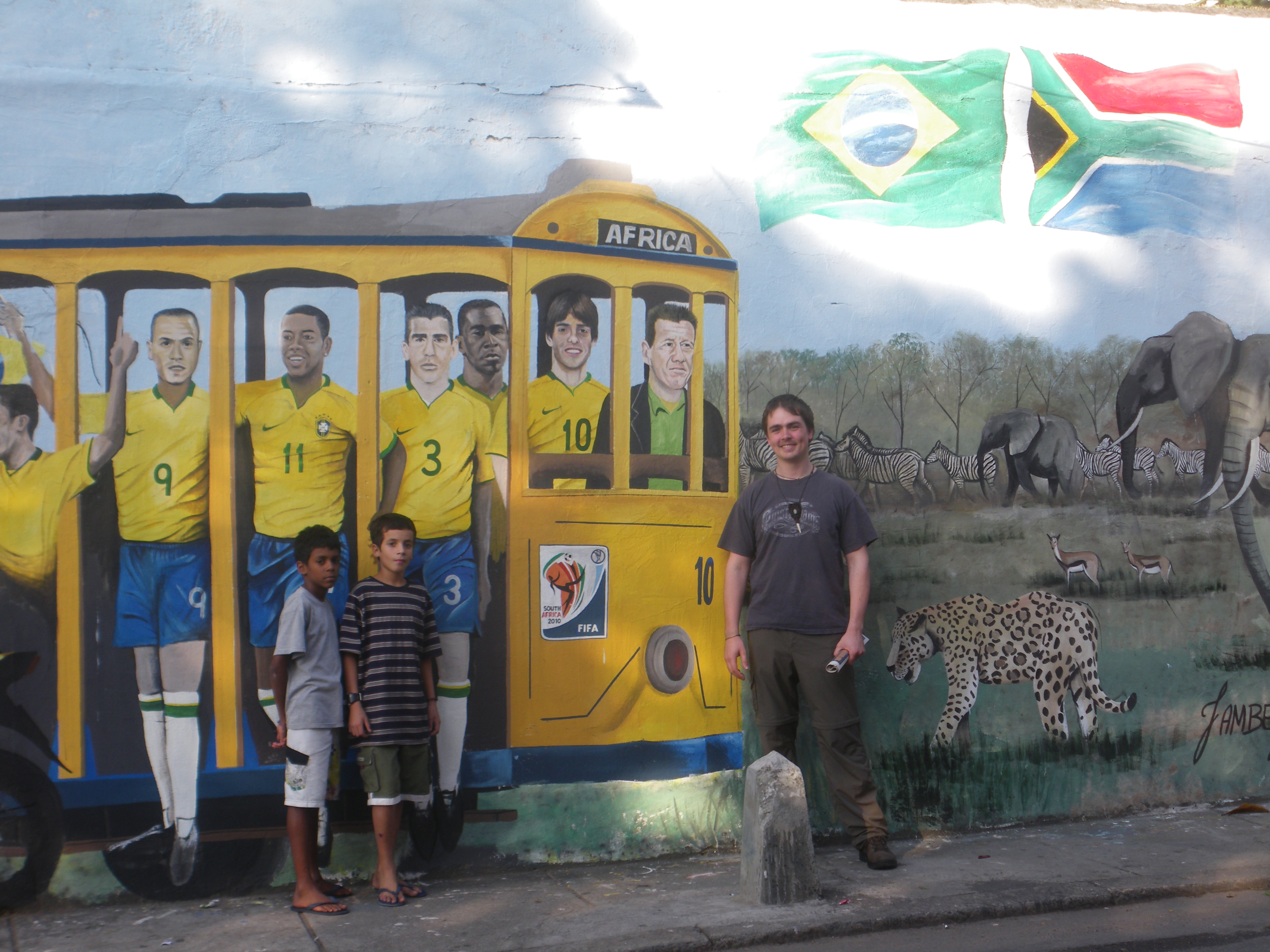
8 June
We took a one day Rio tour, and although it was nice and sunny the whole day, the Christ Redeemer statue was engulfed in a big fluffy cloud. We went up regardless but the view were not nearly as spectacular as they would be on a clear day.
We also went to the charming old neighbourhood of Santa Theresa and later to Lapa, were we met the artist who covered a whole flight of stairs in tiles collected from all over the world. Lots from Germany and a few from South Africa as well, unfortunately all of them quite kitsch.
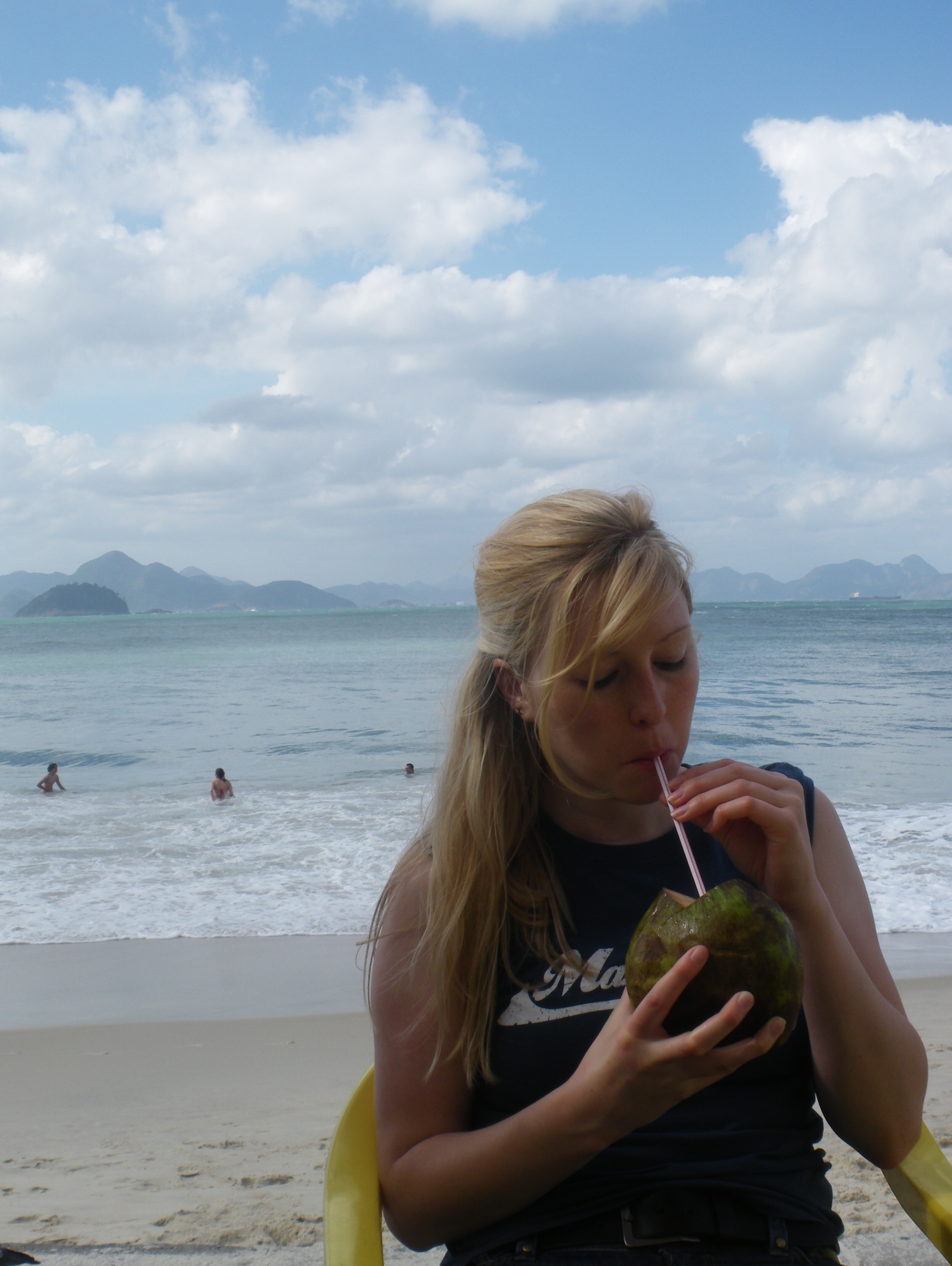
9 June, Itacaré
We leave to Itacaré on Sao Geraldo busline. I made an effort to stay awake and take in the landscape. Deforestation was evident everywhere and for me quite sad. Nonetheless, the landscape was striking and pretty.
10 June
We arrive in Itacaréafter a 24 hour bus trip. Itacaré is a small town on the coast of Bahia, with 14 beatiful, pristine beaches popular among hippies and surfers. Each one has its own character, with some only reachable after hiking through the forest, revealing a secluded tropical paradise, filled with trees coconuts and cute white crabs.
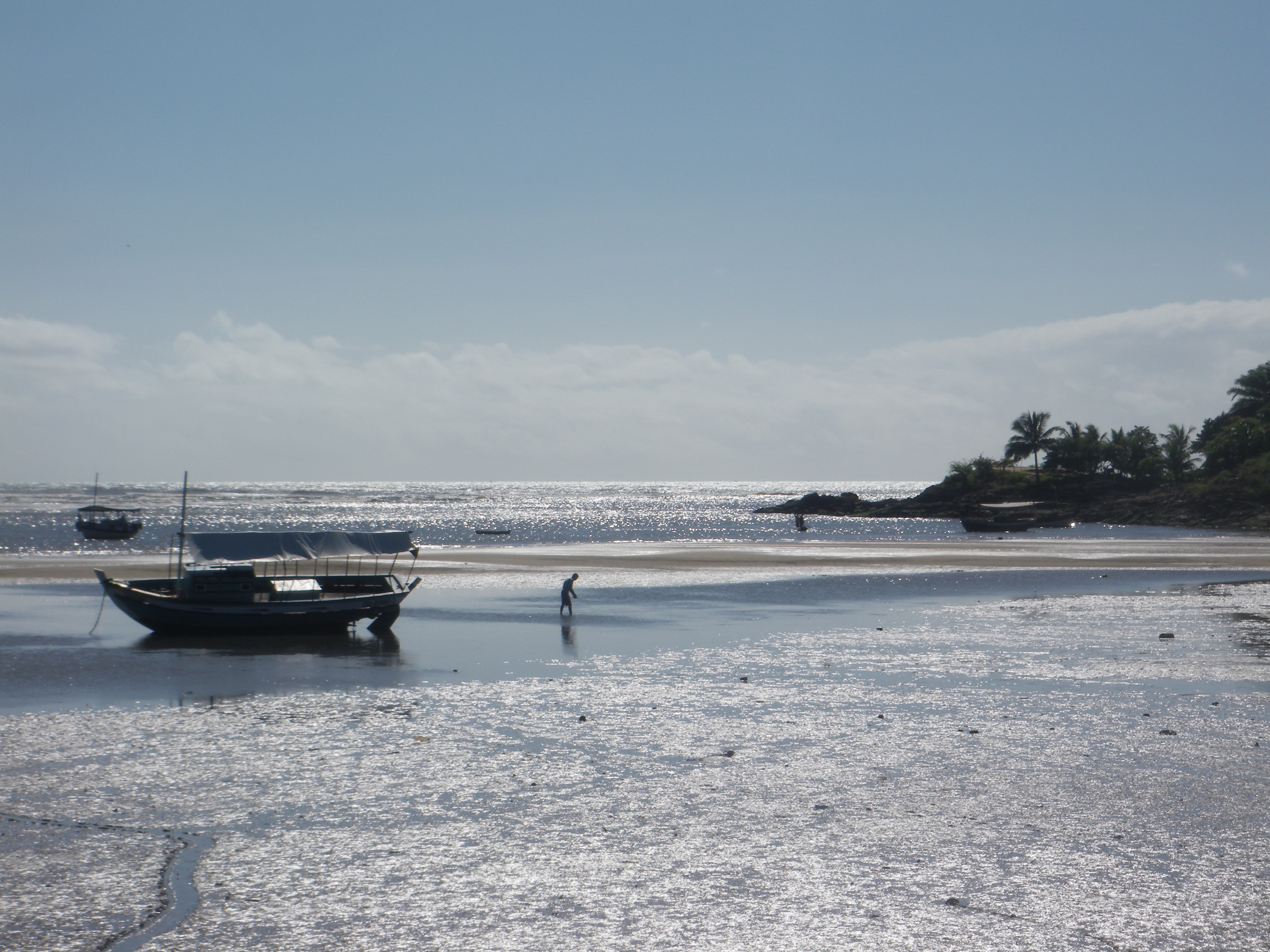
The houses are small and modest, but gone are the scribbles and grafiti which were so commonplace in Rio. Everywhere locals are working, digging, mixing sement in the street and painting the sidewalk stones red white and blue. Lines with confetti and Brazillian flags span the narrow cobblestone streets and a festive atmosphere is in the air. In June the inhabitants of Itacaré have a month long Sao Joao religious festival, not to mention the World cup getting underway.
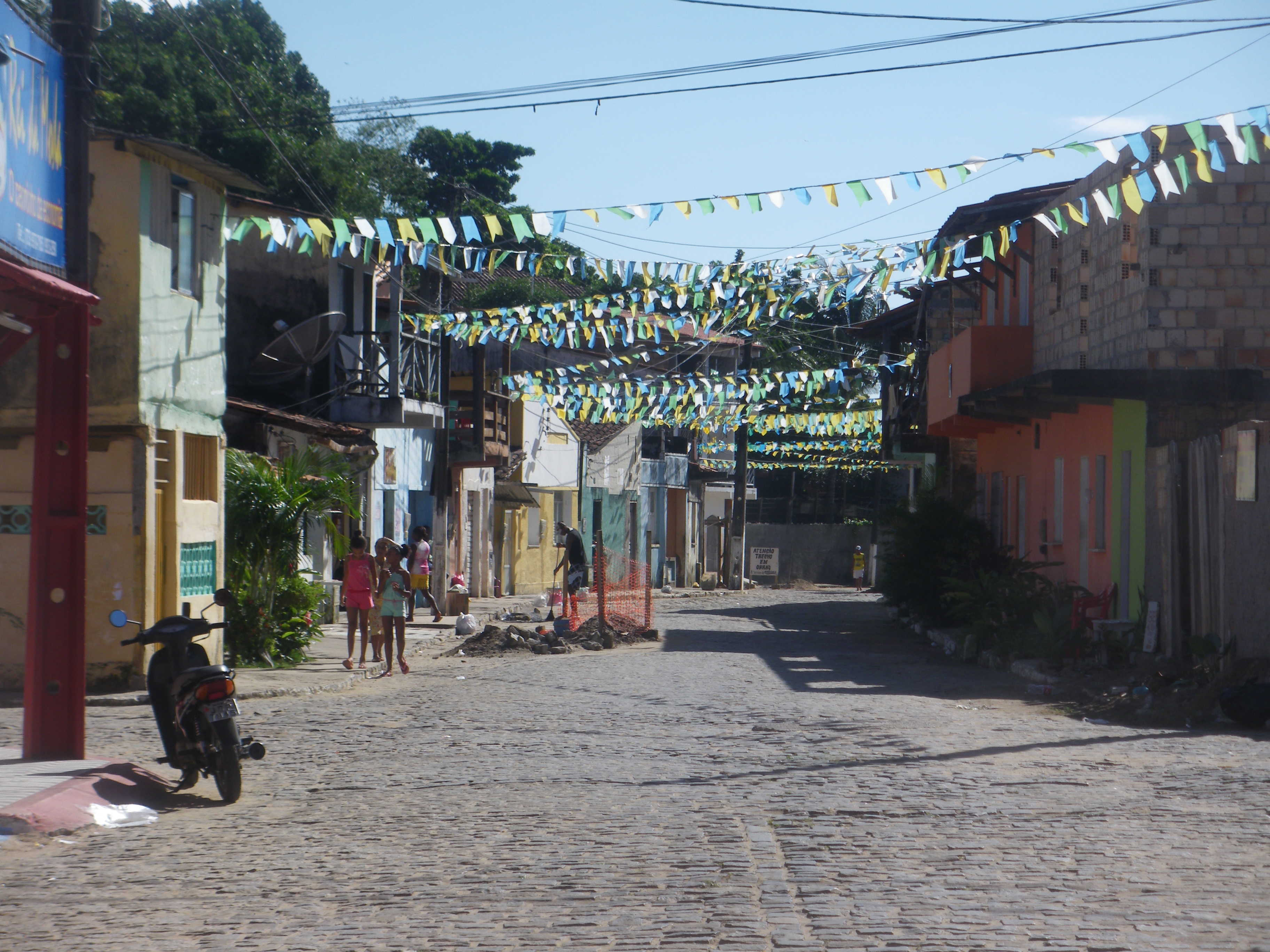
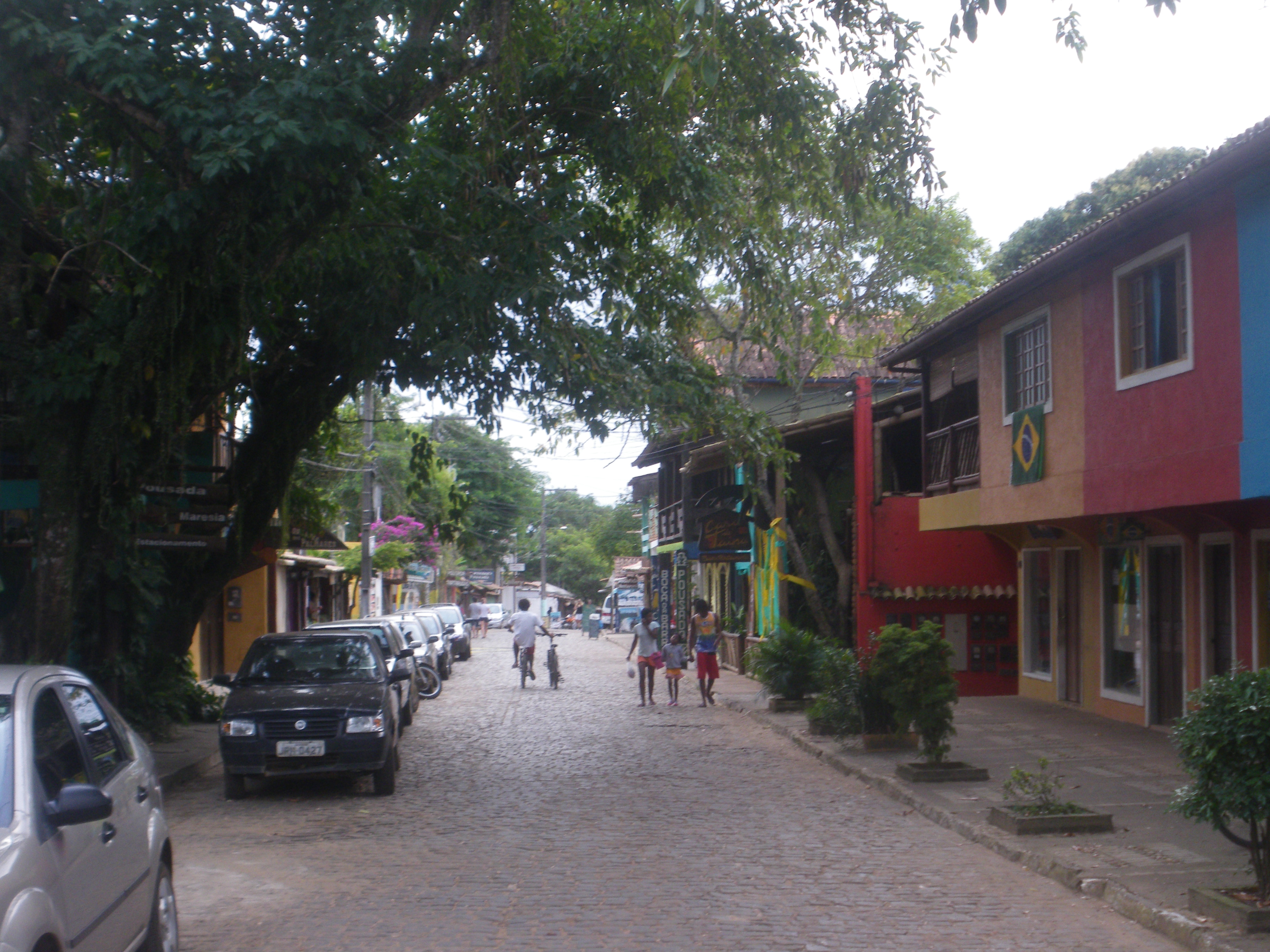
Children are everywhere, playing in the streets and whenever there is a patch of grass free, they will be playing football. The neighbourhood were we stay is a bit more rough than the touristy main street, but we feel safe and there is a definite community spirit in the air. The people seem to live outdoors and with one another, not closed off in their own houses as people in suburbs tend to do.
As a South African, it was very noticable how mixed Brazil is and how easily and comfortably the different people and races interact with one another. Mixed race couples are common and I hope that South Africans could one day take a leaf out of Brazils book and also learn to live so relaxed and comfortably with one another.
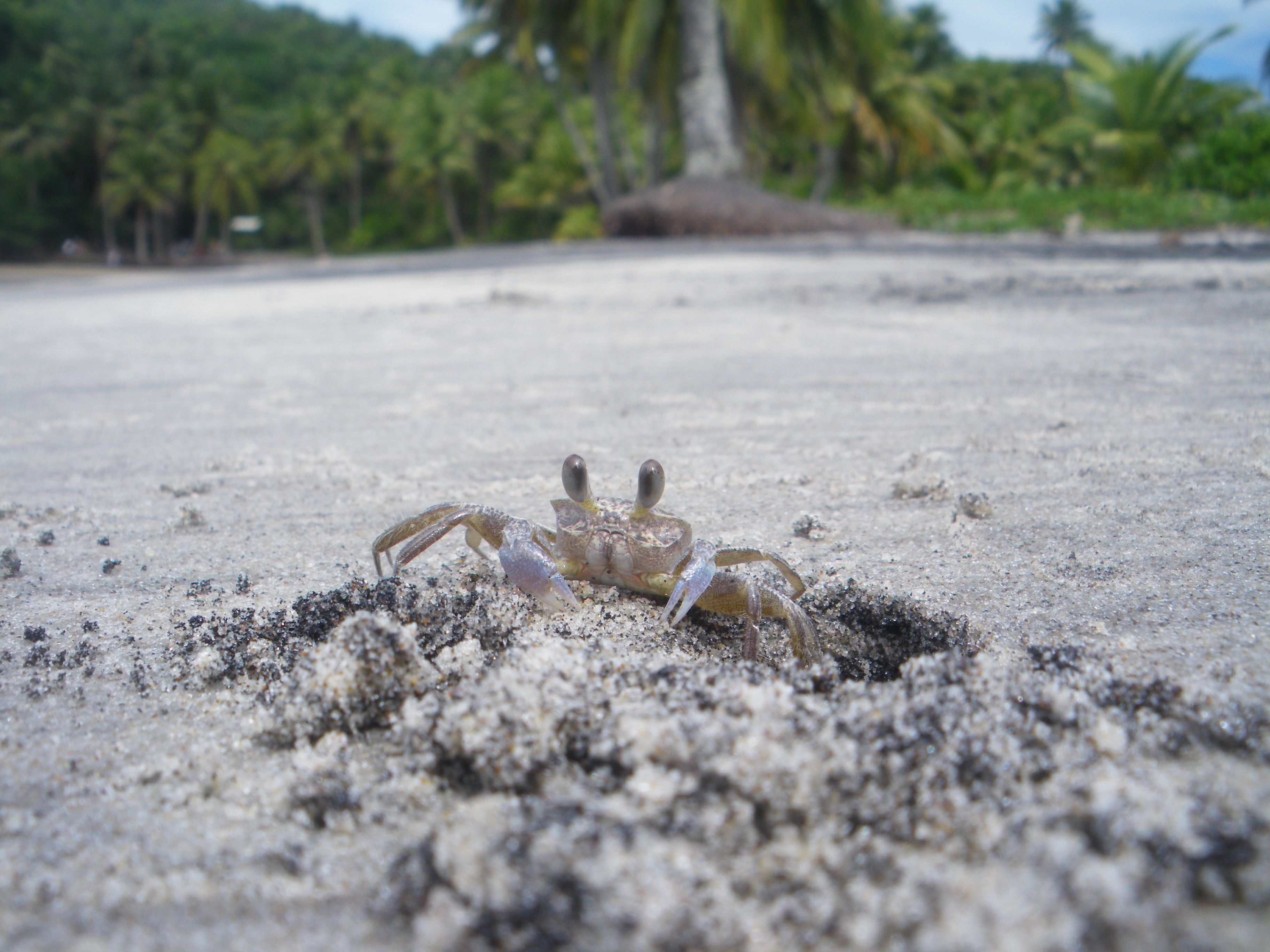
12 June
I watched a Brazilian dating show tonight, and it was quite a funny experience. The contestants start kissing within 5 minutes of meeting each other, and every now and then, everyone is rounded up and made to show off their dancing skills, with especially the men going over the top, showing their abs and striking rediculous poses.
One thing that was remarkable tongight, was that although Brazil is such a ethnically diverse culture, when watching television you would think that it is mostly white with some brown sprinkled here and there. Television presenters are on average much more paler than the faces seen in the streets and towns.
13 June
Everyone in the hostel, about 8 people, started partying with a few beers at the hostel and we then went out to town for a jol. The Itacaré nightlife was great, with the alternative/Hippie vibe and influence omnipresent. We ended up at a place on the beach where a Reggae band played all the classics. Capirinhas were everywhere and it was a great atmosphere and ambiance for Manuela and I discuss our trip and how it was going so far. I felt a sense of euphoria, and again realised that life can be as exiting or boring as you want it to be, and that the possibilities for excitement and fulfillment are endless.
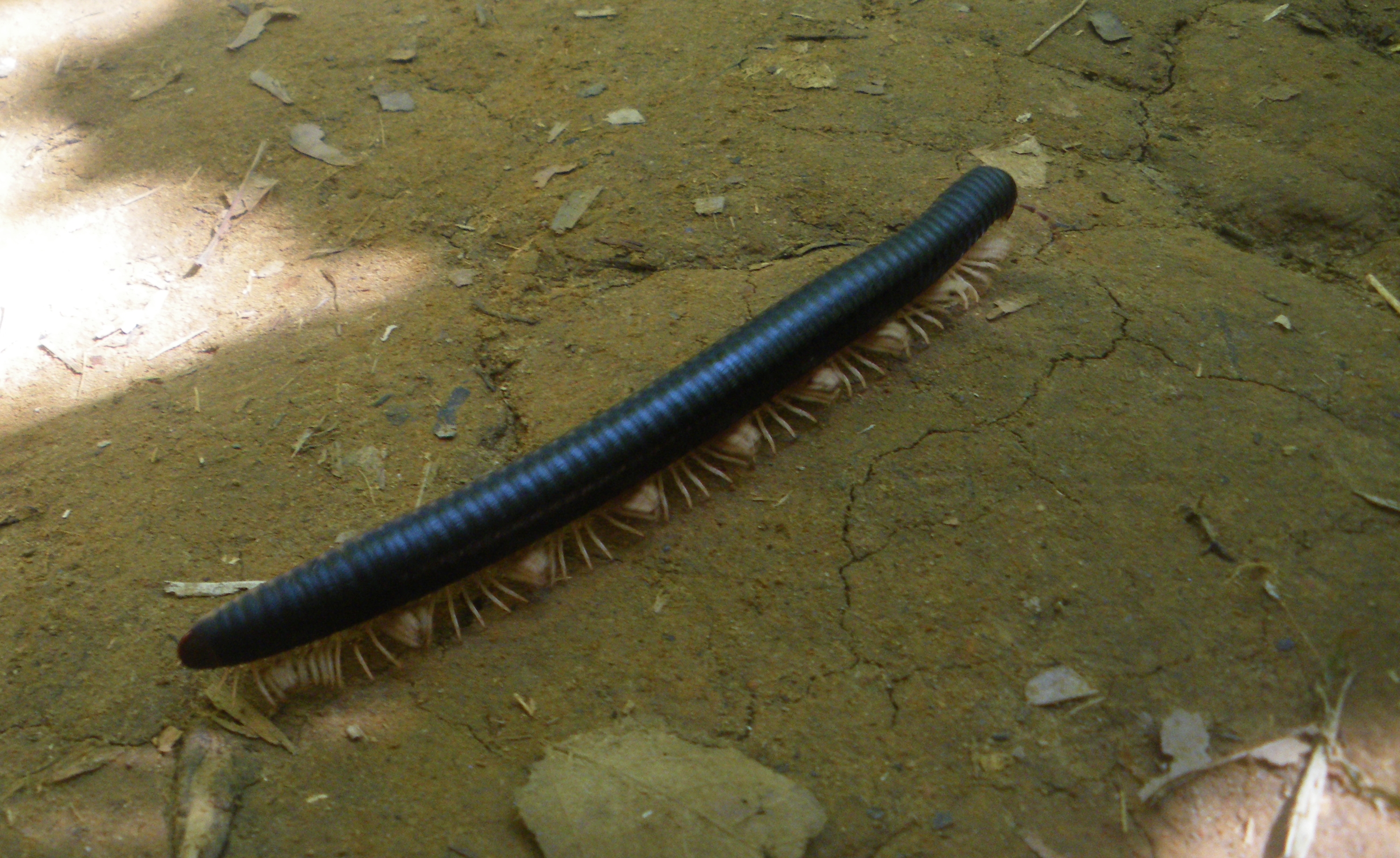
14 June
Today we got up early to walk to the end of town and then hiked for some 50 minutes through Atlantic rainforest to get to Prainha (little beach), one of the prettiest beaches in the area.
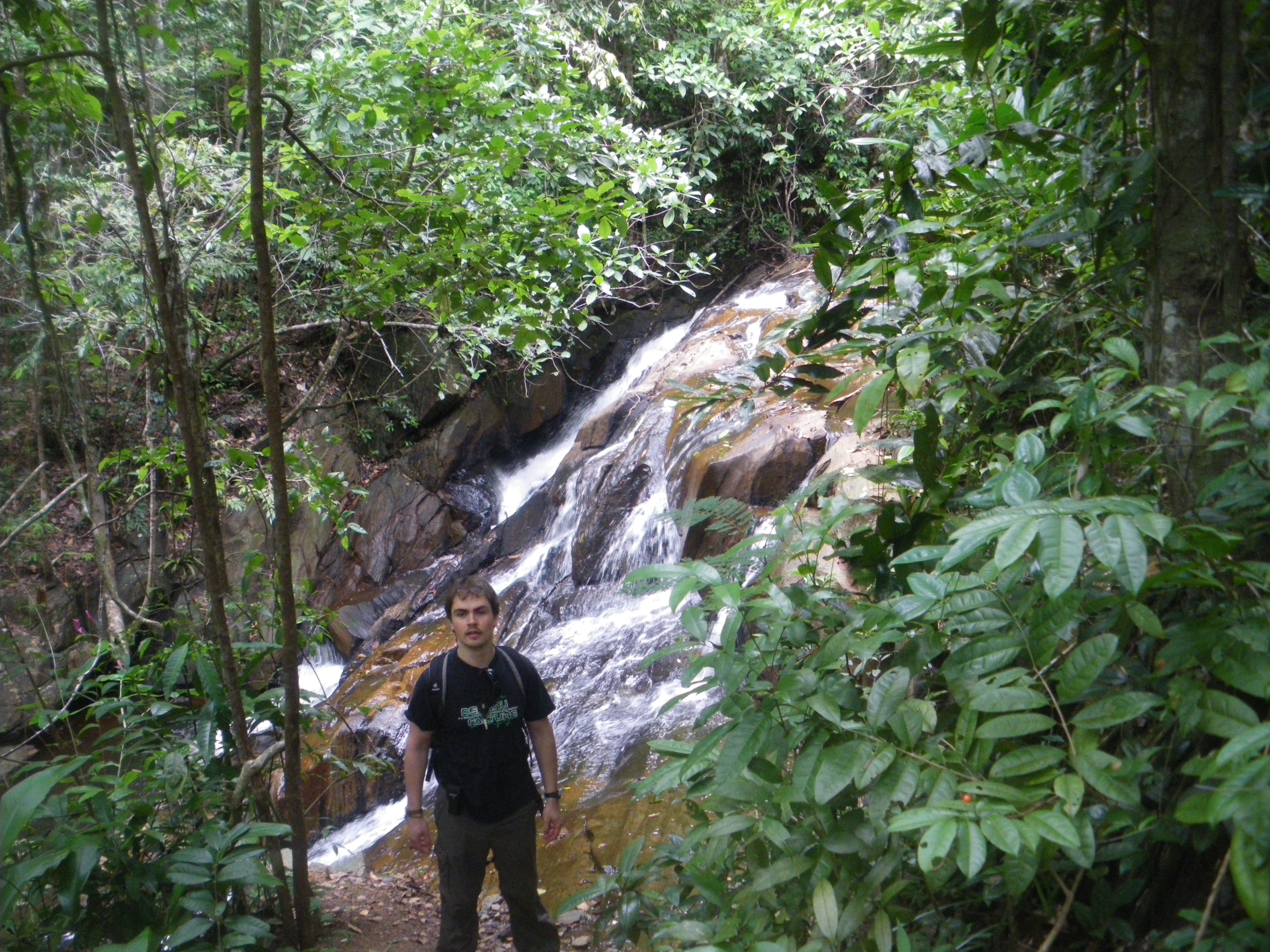
On the way we passed a small waterfall and a smaller rocky beach with a beatiful view.
Prainha was practically deserted except for two other couples and some surfers, including a Brazillian couple we met two nights before.
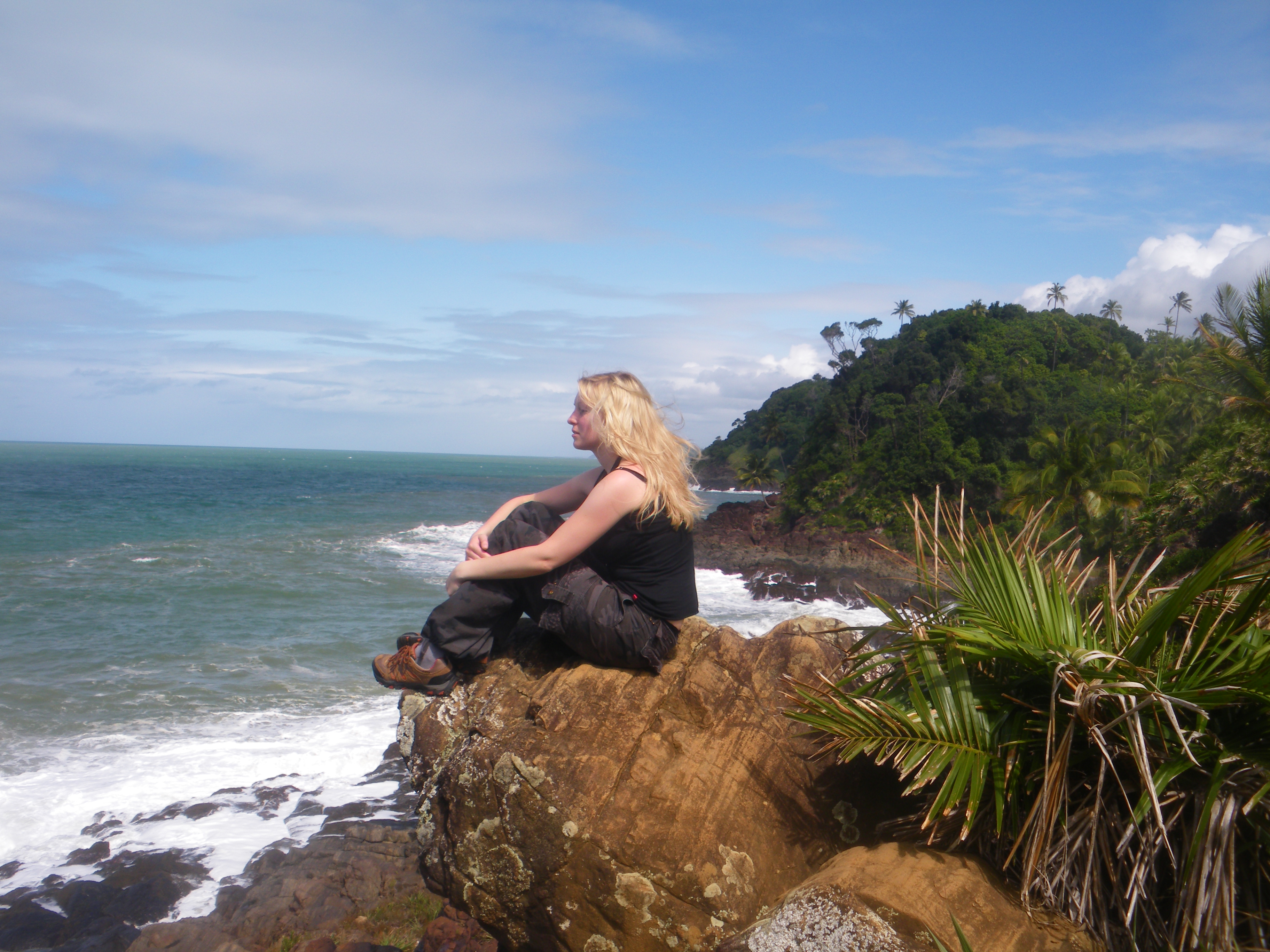
It was a lovely way to spend the day in the Bahian nature and at a pristine beach, and best of all, it did’t cost us a cent to get there.
That night, we suggested that we have a barbeque at the hostel, and Marialena, the cleaning lady at the hostel, sent a young boy to buy some fresh fish for us. She showed me how to clean and prepare them and then I grilled them with some meat, potatoes and aubergine all together on the fire.
Afterwards we chatted the night away about life, traveling and Brazil. We received a lot of insight from Niels, a Portuguese speaking Dutchman, about the politics, laws, police and culture in Brasil.
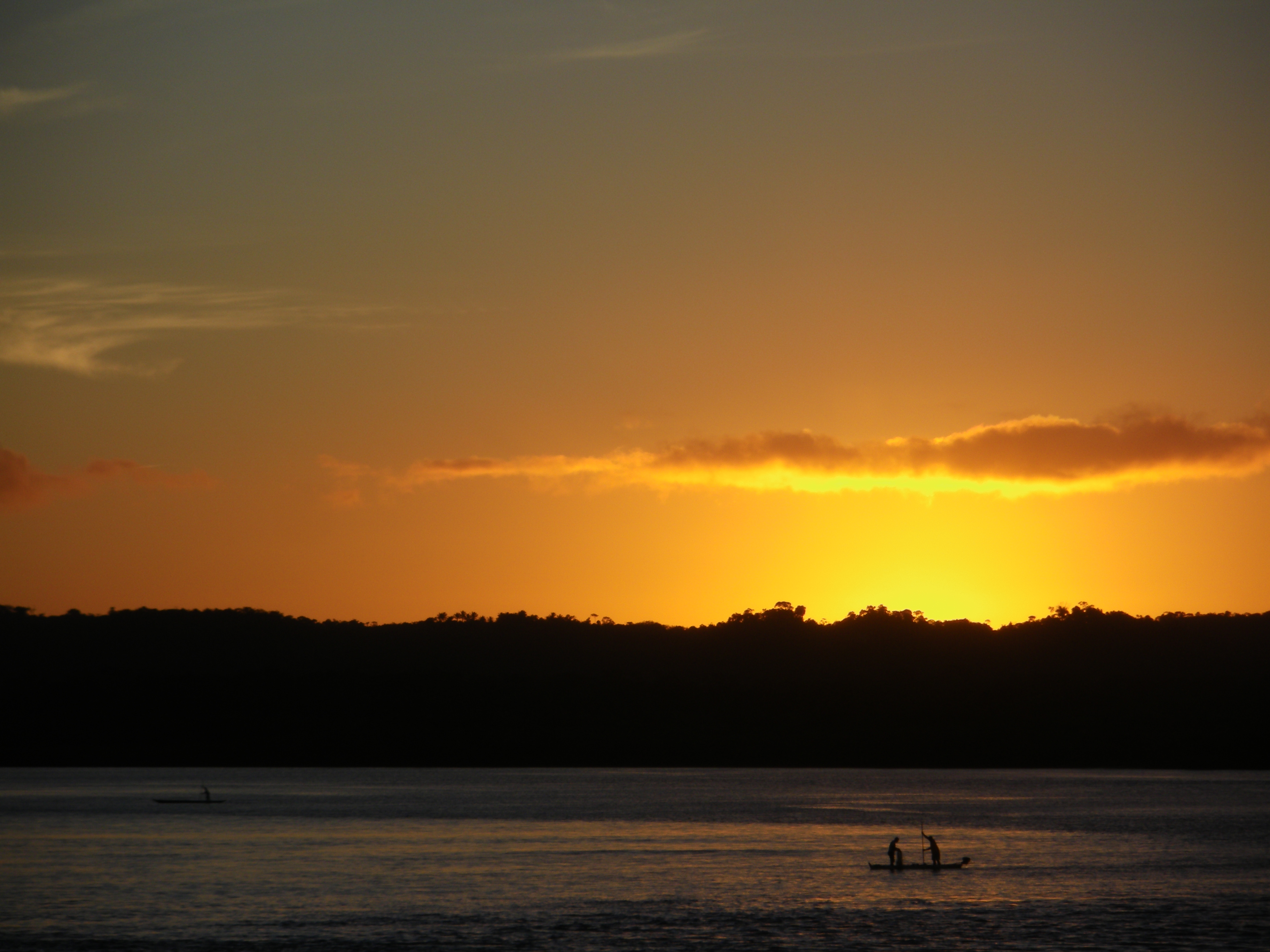
16 June
This night we went to Jungle bar to watch the local Capoeira school showing off their moves. It was an unforgettable experience. Everybody was in peak physical condition, and some of the older guys were quick as hell. The teacher is a guy called Jamaika, apparently in the late 40s, but still looking very fit.
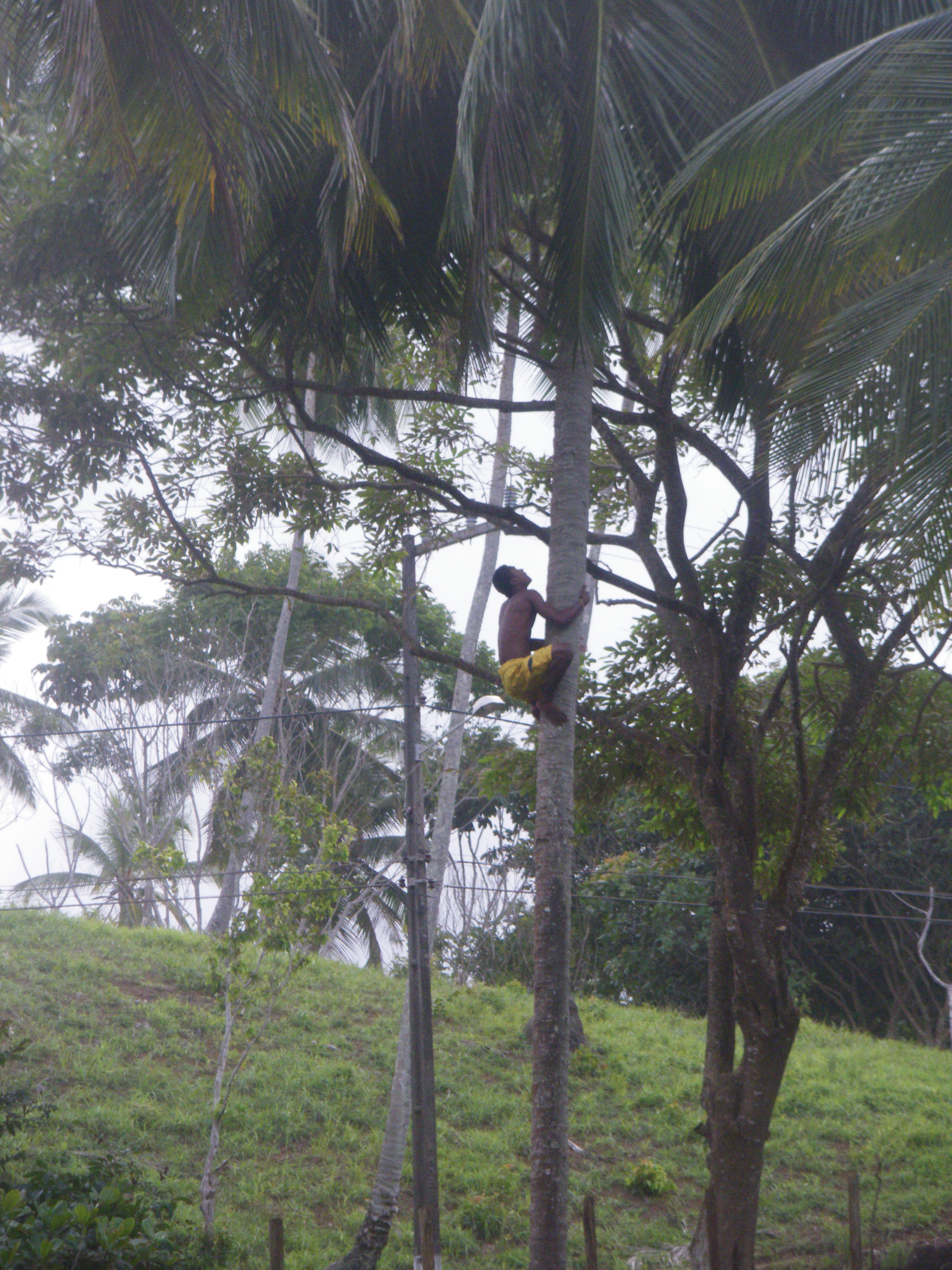
I couldn’t help but think of the slaves who in their meagre spare time created and practiced the art of Capoeira. The slave masters were wary of anything that might have made the slaves a threat, so Capeoiera was disguised to on the face of it appear as a dance, perpetually accompanied with distinctly African singing and music, with the more dangerous moves only practiced when they were alone. Often I was reminded of breakdancing, although this martial art is much much older.
Today, the descendents of those original slaves still practice their martial art, and the descendents and relatives of the slave masters are honoured to become their understudies.
17 June
We traveled today with Fausto, Niels and Helena to the more secluded beaches of Havaizinho (little Hawai) and Engenhoca. You need to walk for about half an hour through the forest to reach Havaizinho, and then another 20 minutes to reach Engenhoca. Both beaches are beautiful with Havaizinha being our favourite. Engenhoca was a pleasure to swim in, with nice waves but very little undercurrent. We ended the day back at Itacaré on a hill at La Choncha beach watching the sunset. Just another day in paradise. :)
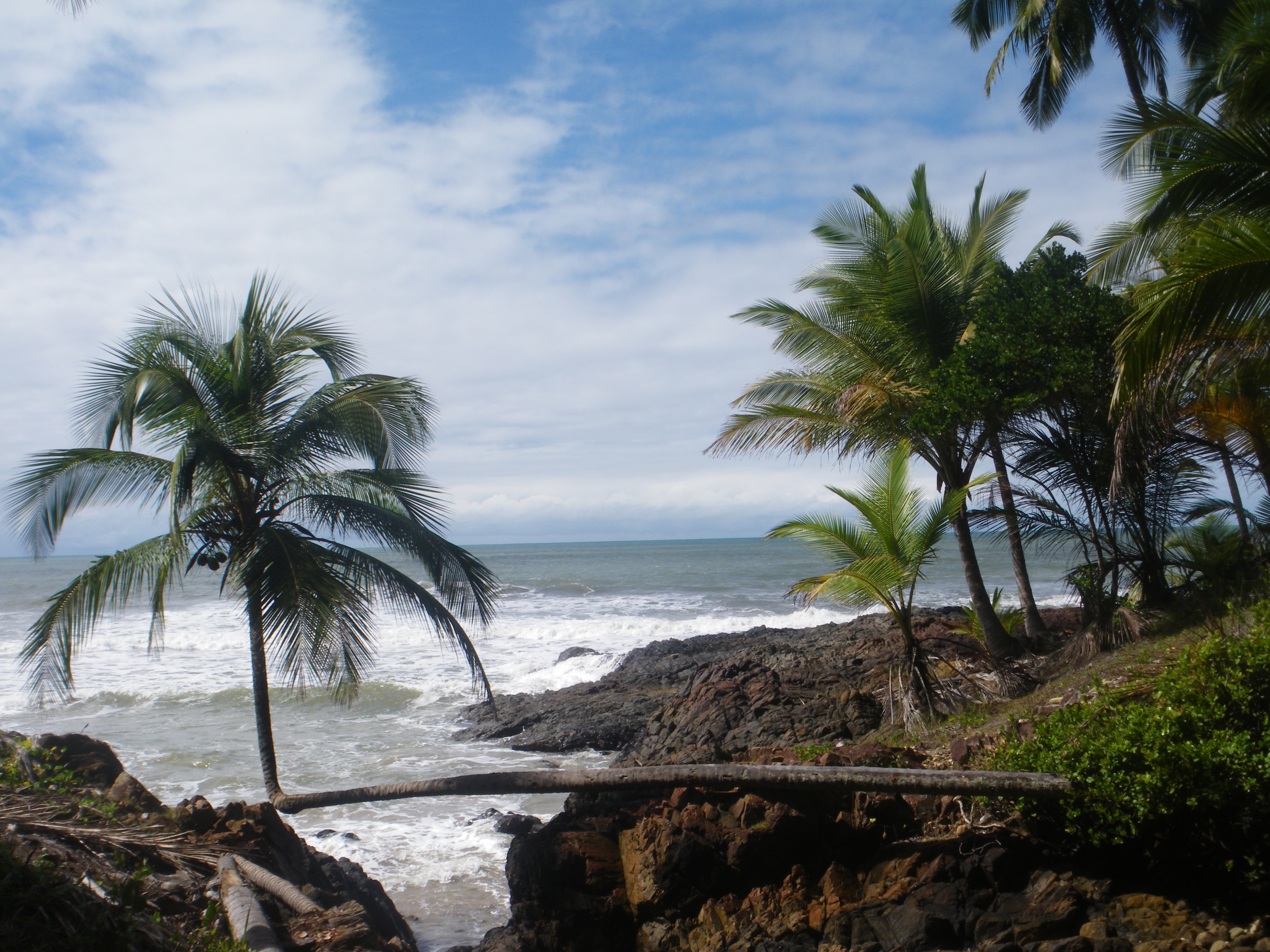
19 June
We had an amazing time in Itacaré, spending 9 days in total. Steve at Buddys was an awesome host and the staff (especially Daniel) were incredibly friendly, making us feel completely at home. We will leave with heavy hearts but fond memories.
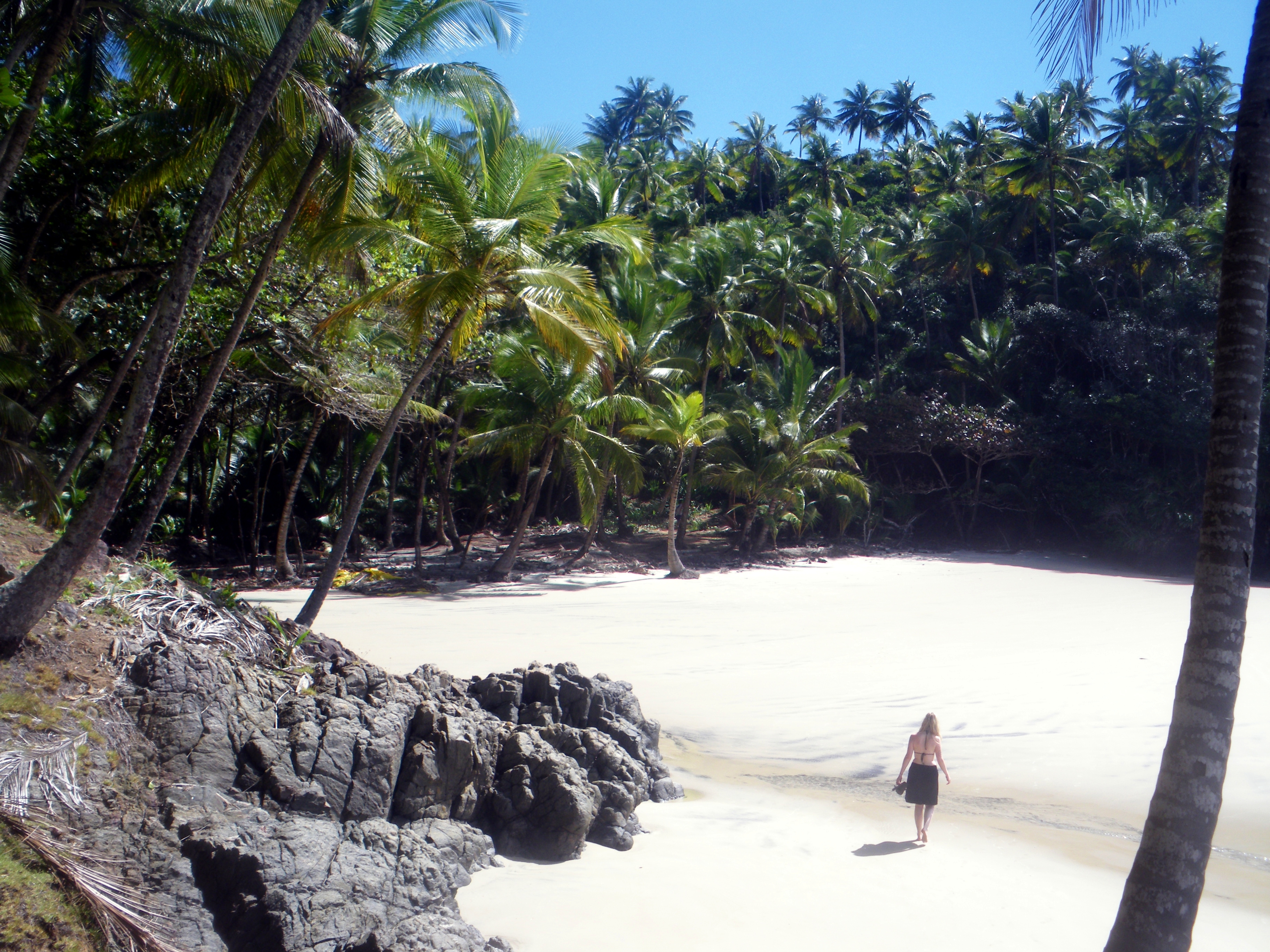
20 June, Morro de Sao Paulo
We woke up early to catch the bus from Itacaré to Valença. The bus departs numerous times each day, but Brazil was playing in a World cup match that day and we’ve heard stories of the whole country coming to a standstill during football matches, so we decided to play it safe.
From Valença we took the speedboat (pronounced “speegy boachy” by the locals) ferry to the Island of Morro de Sao Paulo.
The water was opaque with such smooth waves that they reminded me of the simulated waves in a computer game. I’ve been reading about quantum mechanics and the fact that certain physical attributes are left undetermined (uncomputed?) until some observer chooses to observe them. Lately the view of the universe as a quantum computer seems to make more and more sense to me. Things are left uncomputed as quantum waves of probability, until (and if) the first observer chooses to observe them.
Upon arriving at Morro de Sao Paulo, we passed through a lovely arched colonial gate. In the afternoon in winter the sun can be seen setting through its opening.
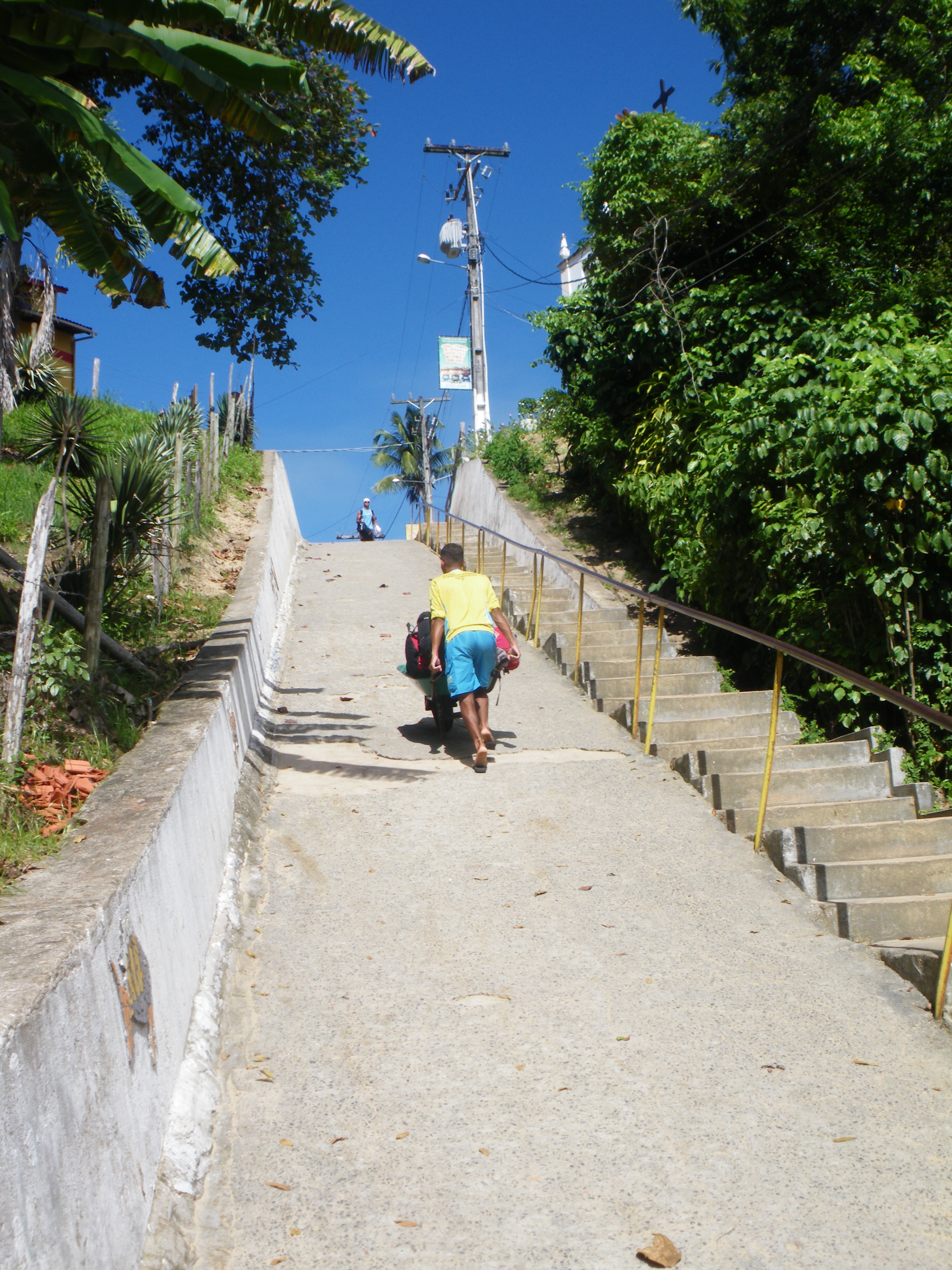
Morro de Sao Paulo has no cars (none that I’m aware of). That being said, the first thing you are being greeted with upon entering through the gate (aside from the official charging a R$10 land tax) is some guy offering a taxi. The taxi it turns out, is a wheelbarrow, in which they load your baggage and then push for you through the sandy streets, stopping at the Pousadas while you haggle with the owners.
21 June
Morro de Sao Paulo is nice, the weather is perfect and it has it’s own charm, but it’s quite a bit more touristy than Itacaré. Everyone wants a piece of the pie, and you sometimes feel objectified as a walking wallet.
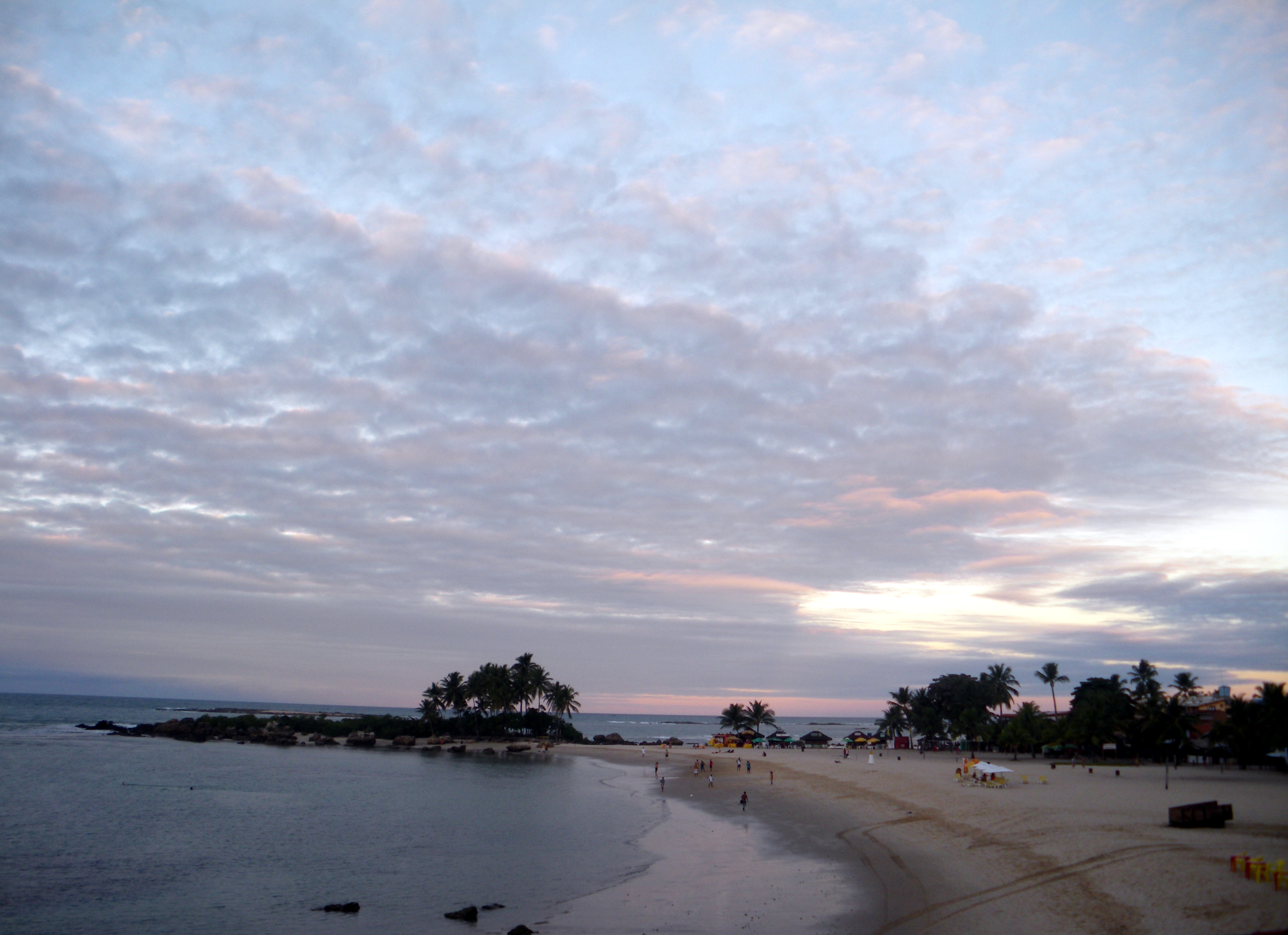
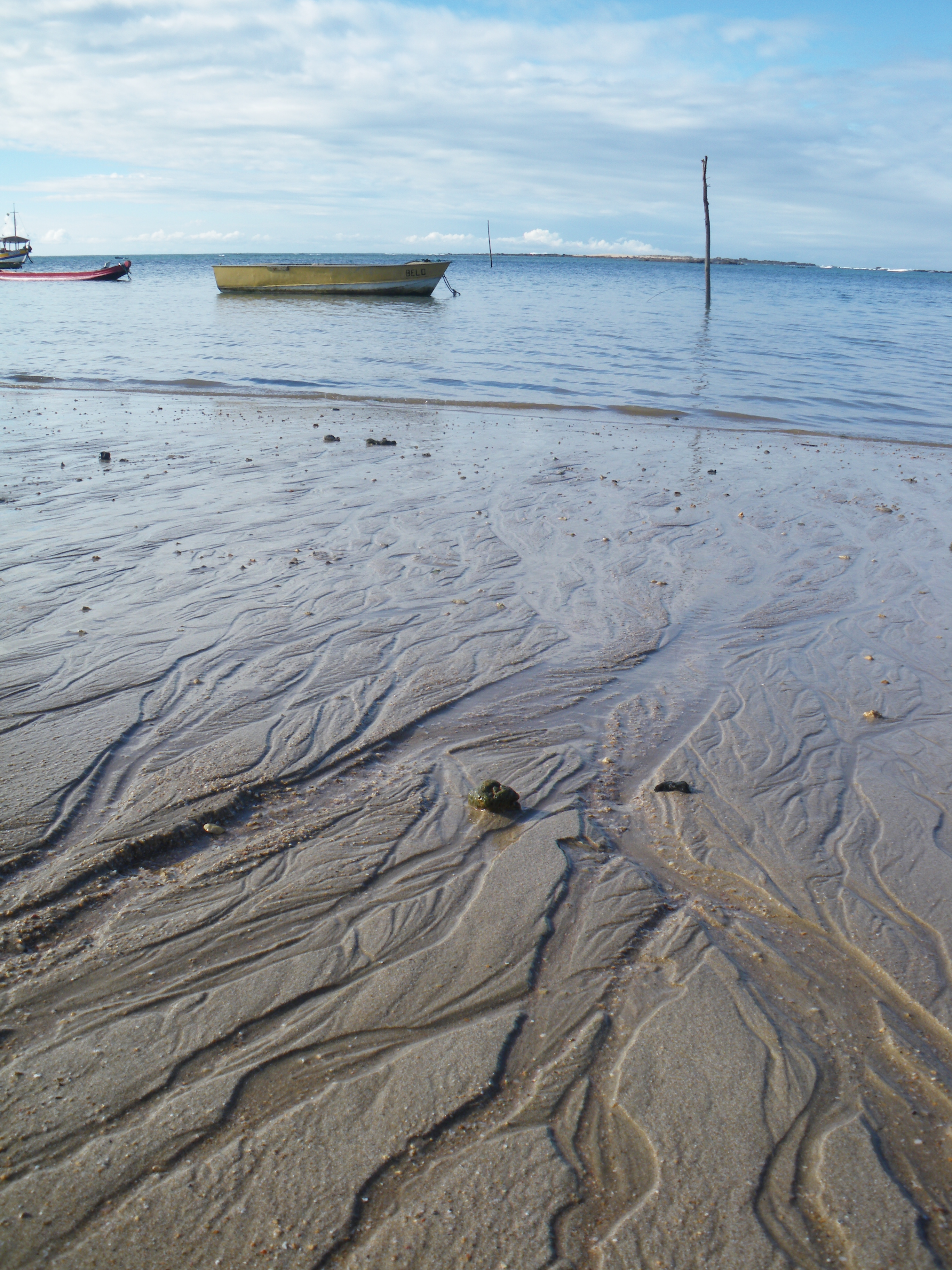
22 June
We took a trip today to another beach on the island, where we smeared some magic mud on us. All information we got was “Remédico” (pronounced: Hermaigico, ‘ai’ as in ‘fair’) and “Medinicional”, so were still not sure what it’s good for. My skin did however feel quite smooth afterwards.
We then left to the pristine island of Ponta de Corraes, apparantly with a 70km stretch of untouched coastline. Unfortunately the terrible polluting effect of plastic was abundantly clear in the large amount of bottles, caps and other garbage washed up on the shore.
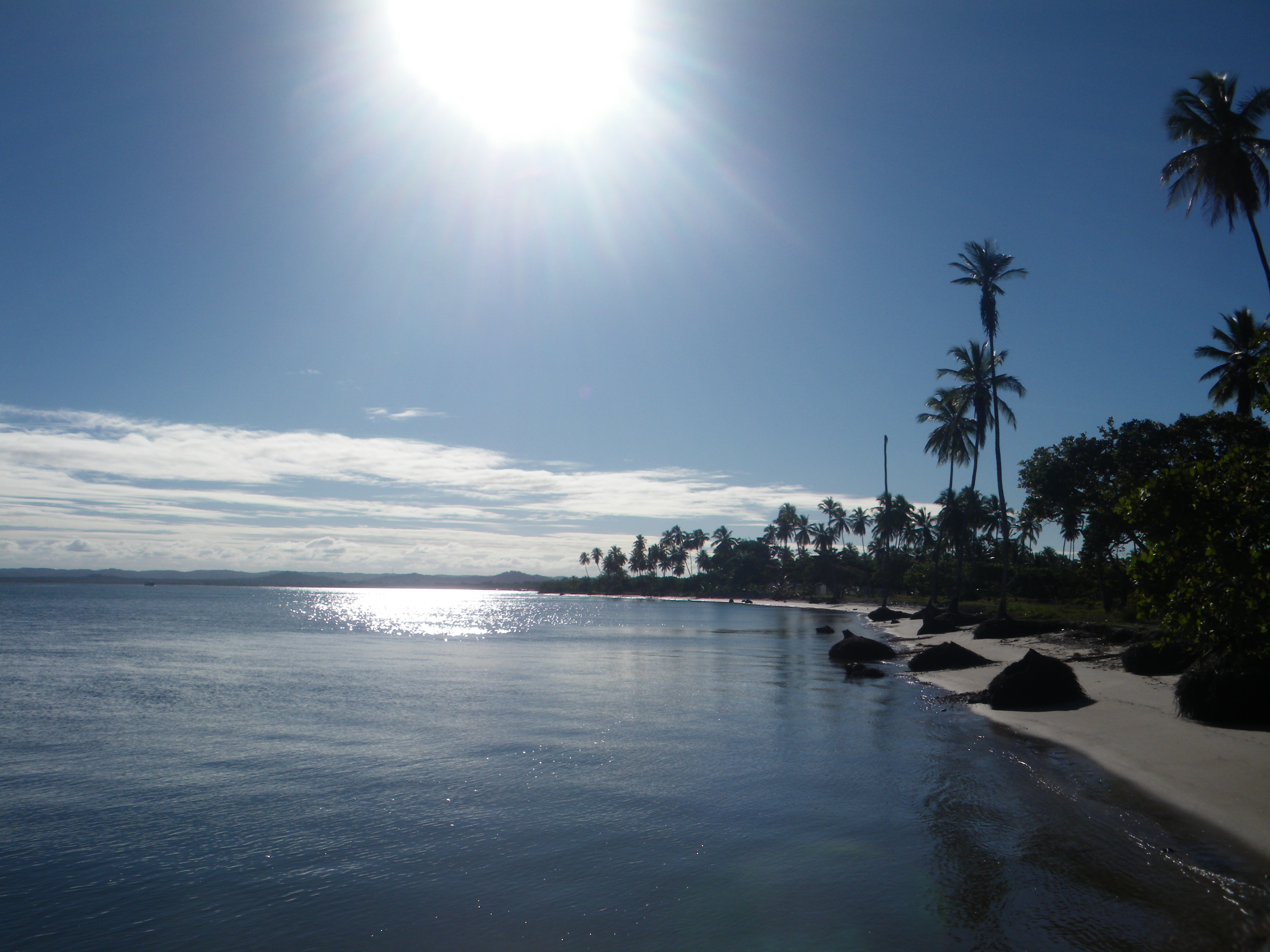
23 June
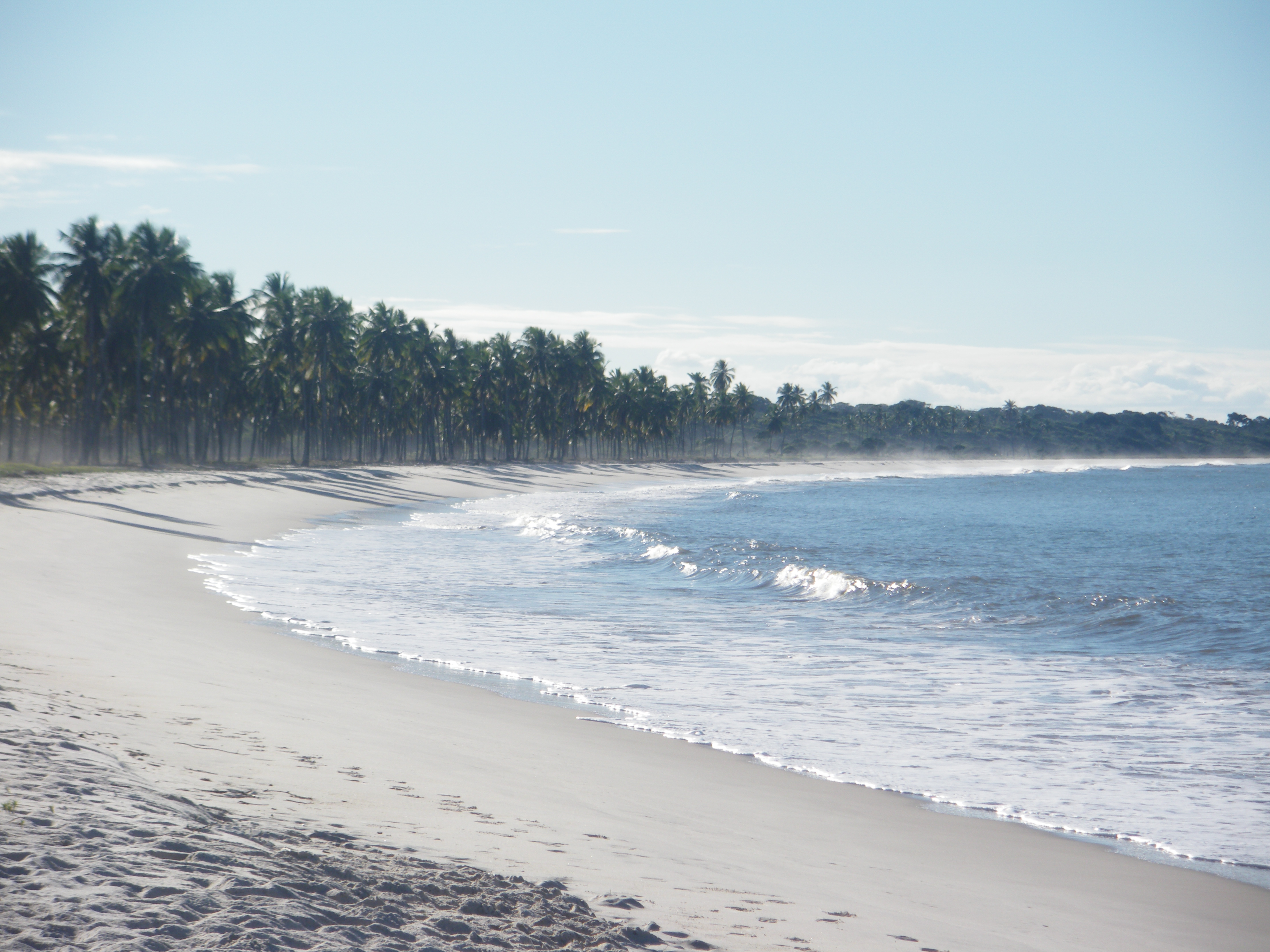
We tried to hike to a fountain on the island, took a wrong turn and ended up crossing the whole island, until we reached the beach on the other side. We hiked a bit through the jungle, and upon reaching a small village, the locals enthusiastically greeted us and even offered us some of their food.

At night there was a Sao João celebration, with a live reggae band and groups in colourful dresses doing traditional dances.
Earlier, during the day, Manuela found a ripe, intact coconut, which we took home and placed in the fridge. That night we drank the chilled coconut water and ate coconut flesh from a smalled “seco” (dry) coconut.
24 June
We left before noon on a catamarán to Salvador. It’s almost impossible to not get seasick while sitting inside, but if you go stand outside in the front and stare out into the endless sea, then the nausea goes away and the fun of sailing takes over. I tried to imagine the trials and hardships the Rennaisance era European sailors had to overcome, crossing the oceans in search of a traderoute to India.
It was a holiday today, and Salvador’s city center was empty. We went straight to the airport and spent 5 hours waiting for our flight to Natal.
We were hosted by a couchsurfer named Cyrus, who was even kind enough to pick us up at the airport.
Friday 25 June, Natal
We went walking in the area of Alecrím, Natal, and shown the town square of the original Portuguese settlement. Cyrus told us that the Portuguese generally created their settlements in the same fashion. A government building, followed by a jail and then a church, all three surrounding a town square. Converted Indians would then build their houses around the town square and extending outwards.
We spent the afternoon with a group of friends watching the Brazil, Portugal game ending in a disappointing 0-0 draw. Afterwards we all sat around the tree, with the group spontaneously breaking out into percussion and song. For me it was culturally eye opening, to see a completely racially mixed group of friends naturally erupting into a distinctively African flavoured song. These people have completely embraced the African heritage of the slaves and made it part of their Brazillian culture. It is the complete opposite of South Africa, were the different cultures were forcefully kept seperate, never developing a common sense of culture or togetherness and where white people still often reject anything perceived as “black” African, while patting themselves on the back for being so “African” themselves. This is however, slowly changing in SA, with people becoming more integrated. Brazil is just decades (or centuries) ahead.
We then went to the beach and Fortaleza dos Reis Magos (“Fort of the three wise men”), which was the initial Porguese construction in Natal. The fort was built in the 18th century, later captured by the Dutch, and then recaptured by Portuguese and Native Indian soldiers.
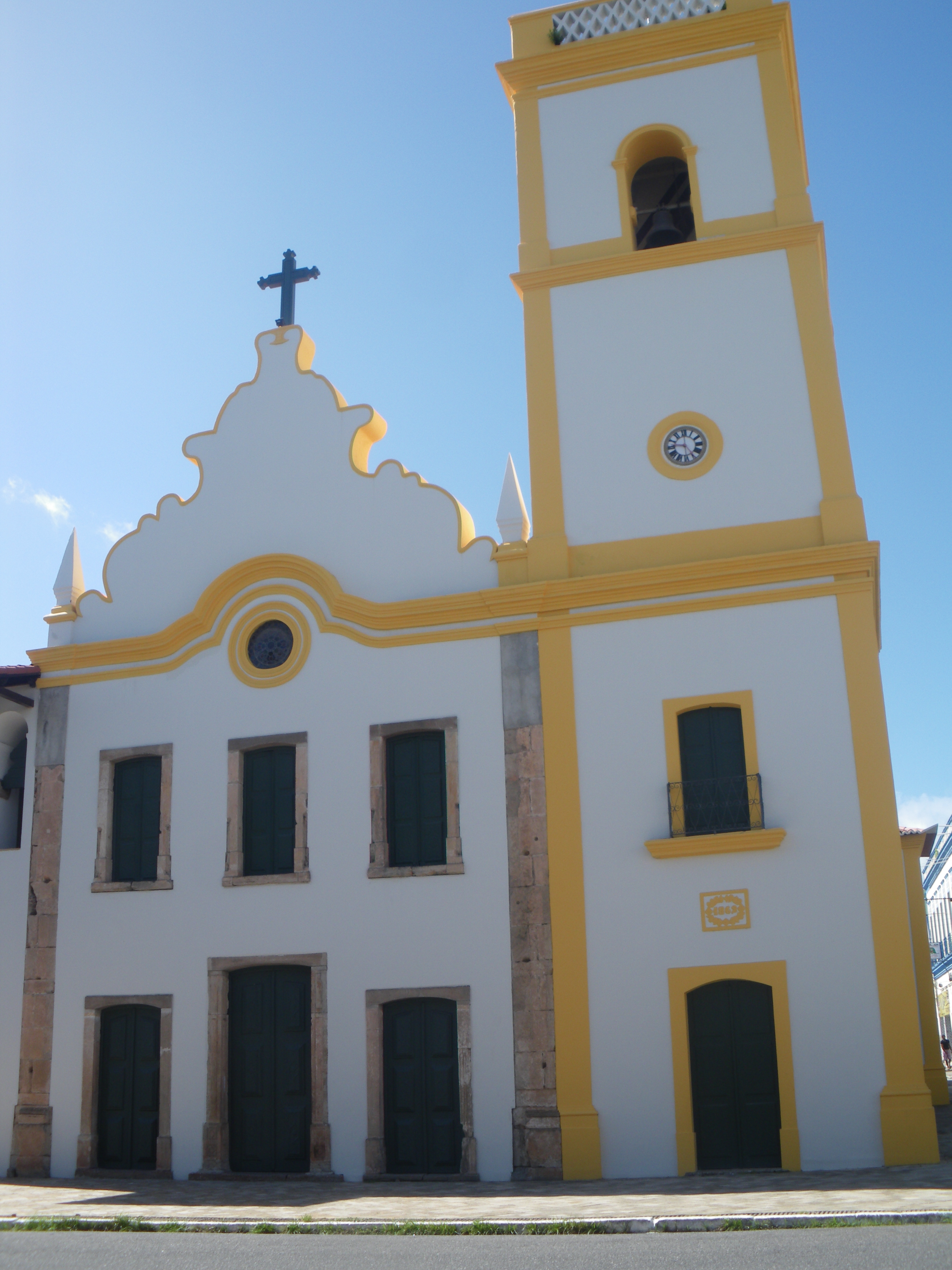
That night, we went to a gathering organised by Cyros’ percussion group. The party was inside a mostly bare building, with a bar in the corner serving beer, water and cola. The drummers play on halved plastic water and trash barrels. One guy was playing on an empty gas canister. Everyone was dancing and a girl in oriental dress danced in the middle, reminiscent of belly dancing. Many of the songs were religious songs of the Afro-Brazillian religion Candomblé.
After about 15 minutes, the whole procession of drummers and crowd (about 30 to 40 people) went outside into the street (all the while drumming and maintaining the rhythm). Some passers by joined the crowed, some dancing and one took a large carton box over his body and made strange animalistic dance moves. It was for us complete magic, being included in a strange type of social ritual, with no idea of what will happen next and with no understanding of the their language.
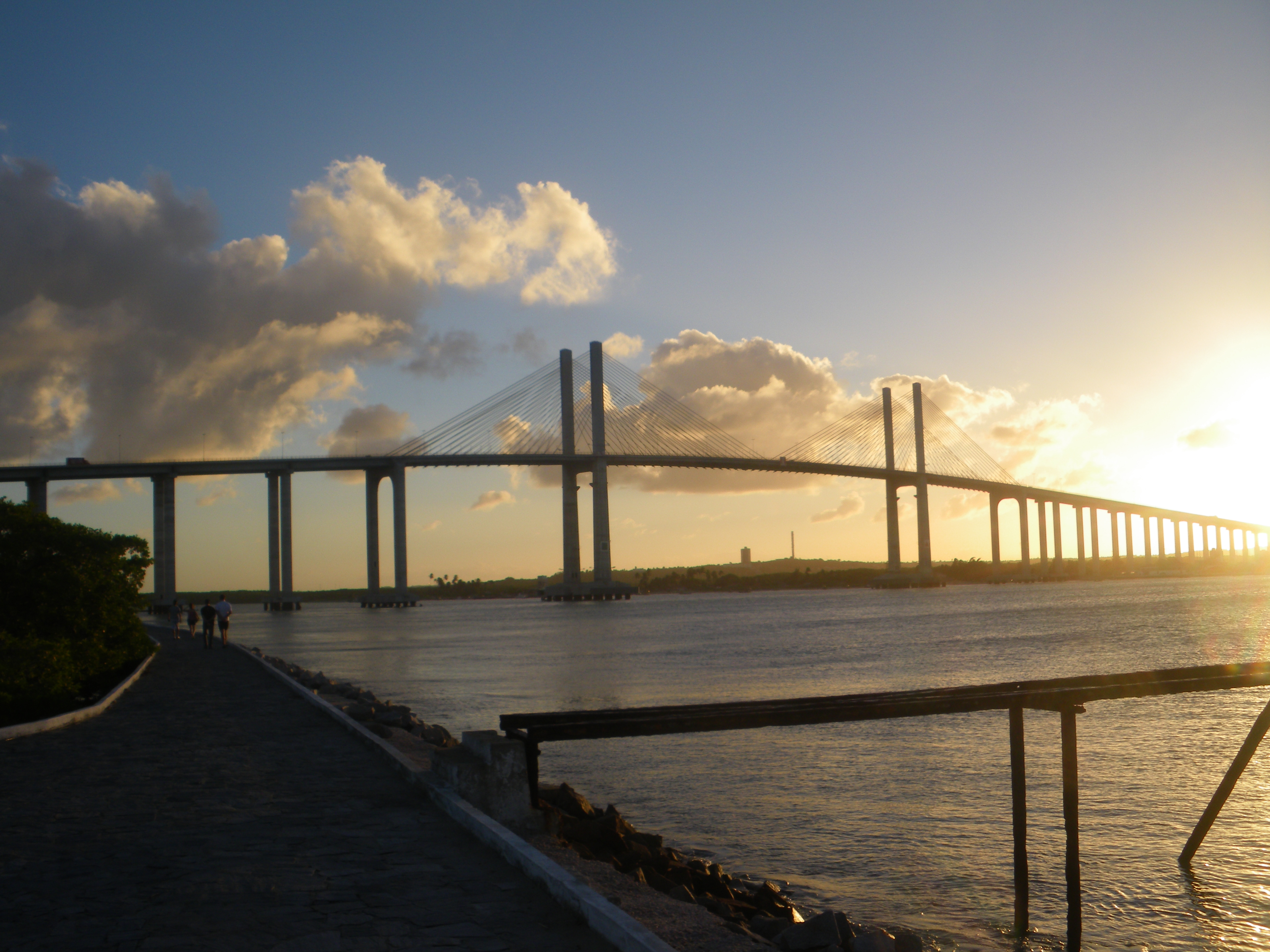
Outside we were entertained by a clown performance, with passing busses more than once slowing down and/or coming to a stop while the driver and inhabitants stare at the show.
Everyone went back inside the house/building and inside continued to make music and dance. There were no pretensions, no designer clothes, cars or any other methods for portraying exclusivity or arrogance and we as two foreigners felt honoured but also welcome.
Everyone danced with everyone else, and dance they could. Often the dancing couples appeared quite intimate, with hips moving seamlessly to the rhythm, only to rearrange into new couples for the next song. I spent a lot of time entranced, just watching the people move. Manuela made the observation that Brazillians seem to be so much more body orientated than Europeans, who “live more in their minds” and I completely agree. During the day they wear skimpy clothing, are very active playing, competing, gesturing and generally moving their bodies about, and afterwards they spend the night dancing and embracing. Touches of the body are common; hugs, brushes, pats and often for single women, grabs.
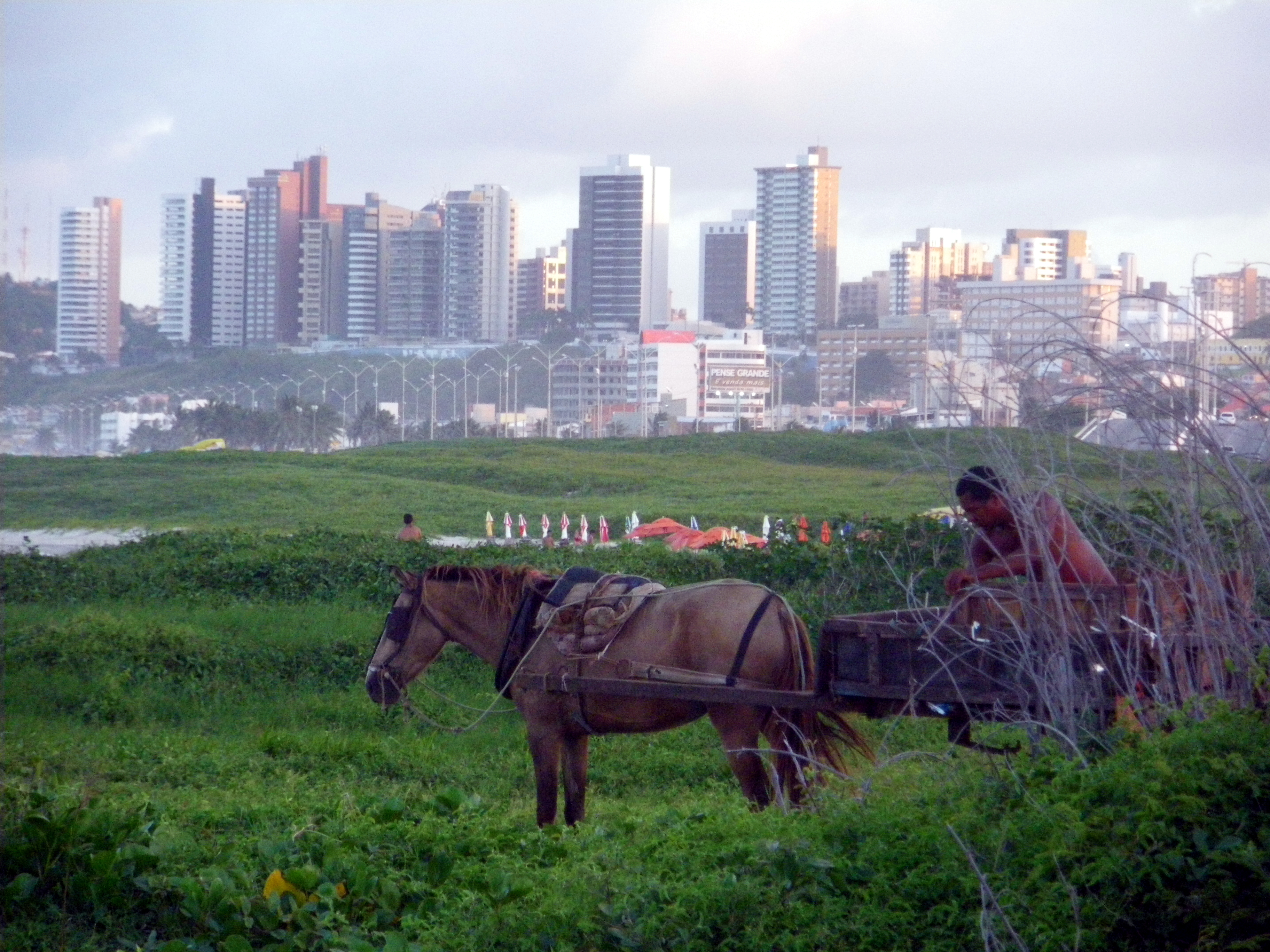
Saturday 26 June
We take the bus to Pipa, a popular small coastal town about 40km south of Natal.
Monday 28 June, Pipa
Sanctuário Ecológico
This morning we left early to go to Sanctuário Ecológico. A private conservation area just outside Pipa. We met up with Cyro, two Argentinian friends and a local couple and hiked the trails in the park.
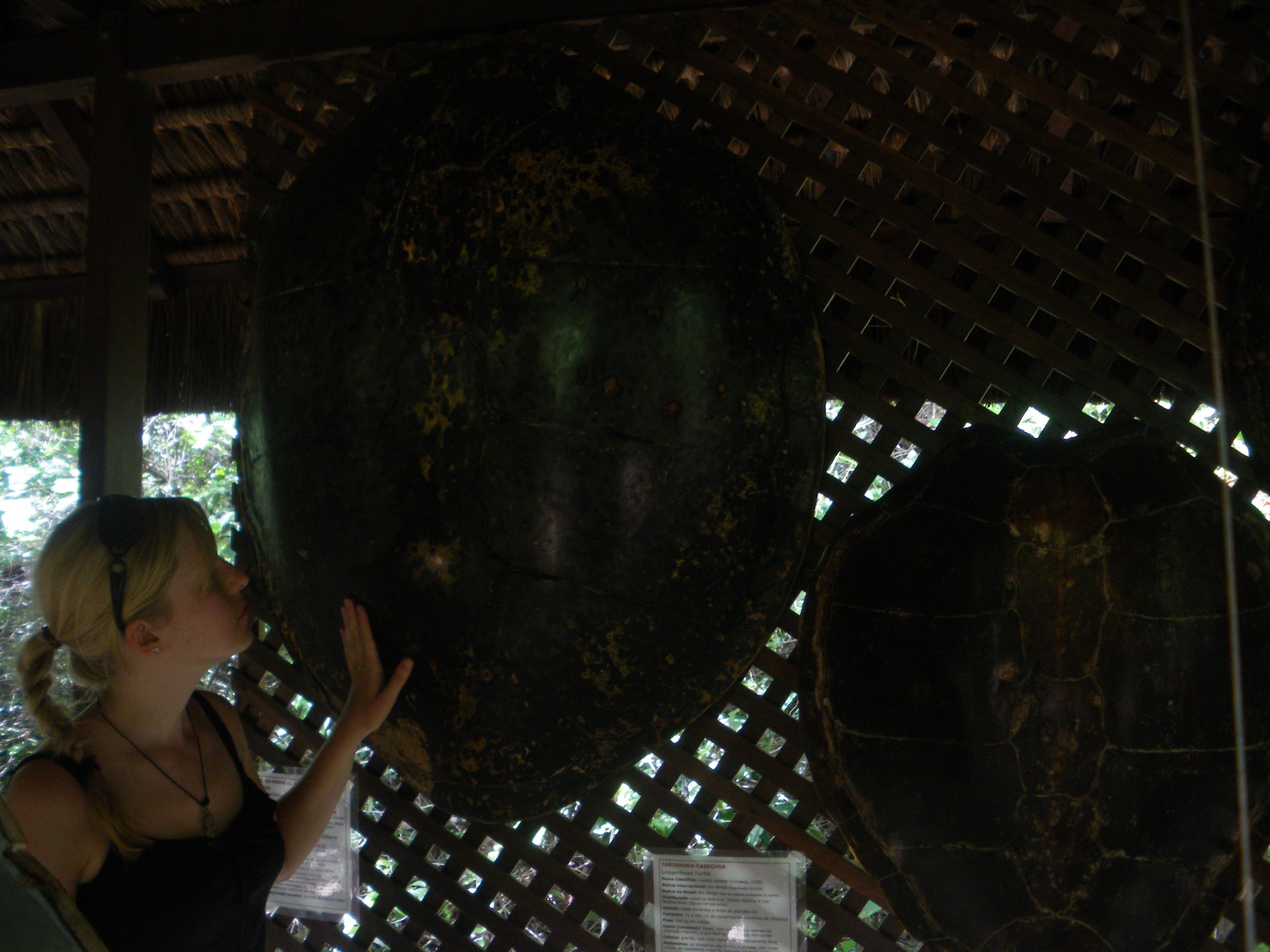
The park was beautifully preserved and maintained, with lots of signposts, markers and designated viewpoints with benches and rails. There was even a small labyrinth in next to one of the trails. Cyro informed us that the sanctuary is privately owned, by a Brit (named Dave AFAIK), that he sponsored local turtle conservation projects and also built an English school in the area. We were very impressed and inspired with this person’s effort and contribution in helping to preserve some of the local vegetation (instead of exploiting it or building a hotel complex).
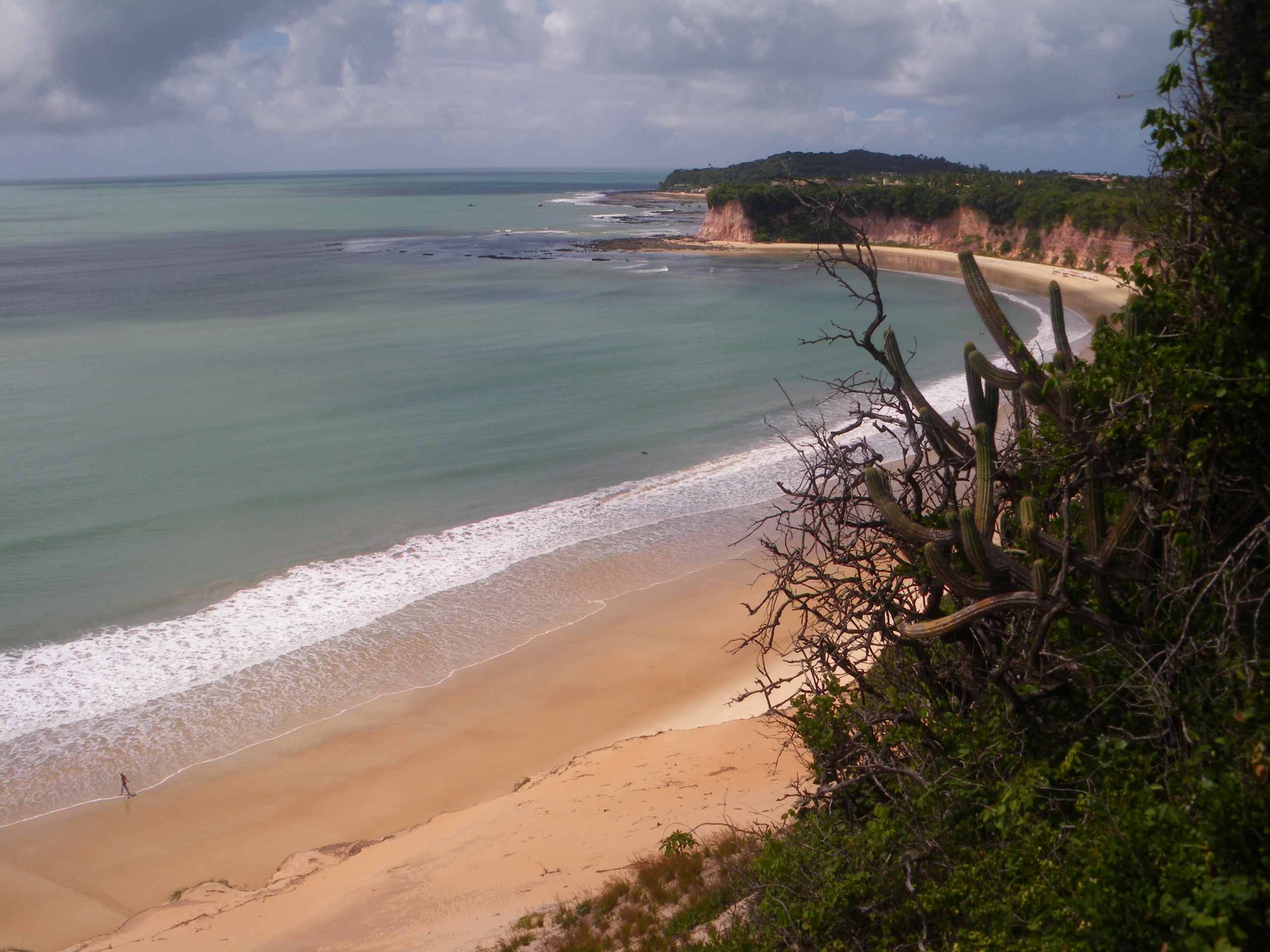
Brazil and the South African struggle
Before the Brazil vs Chile match, they showed some of the public viewing areas in Brazil. Sao Paulo, Copacobana beach in Rio and also Salvador. I was interested to see a big African National Congress flag being waved in the Salvadorian crowd, although not completly surprised. I’ve noticed streets named after Nelson Mandela, grafiti of him on the walls and have heard a Portuguese Brazilian song (one of many apparantly) about him being sung the other night during the live performance in Natal.
Brazillians strongly identified with the plight of oppressed non-white South-Africans during Apartheid, and were enthusiastic supporters of Bafana Bafana during their stint in the world cup. It’s fascinating to witness how strongly the South African struggle still resonates with these people. On a different continent, but with still with a lot in common.
Later a thought occurred to me. Although there seems to be similar negative sentiment towards Israel’s occupation of the Palistinian territories, (in many places in the world, not notably strong in Brazil though), that for all the Palistinians’ tribulations, they lack a Nelson Mandela figure.
Tuesday 29 June
Praia dos Golfinhos
Initially the day did not seem very promising, with intermittent rain for most of the morning. Later, however, the weather cleared and we went to Praia dos Golfinhos (Dolphin’s beach), to go for a swim and relax in the sun.
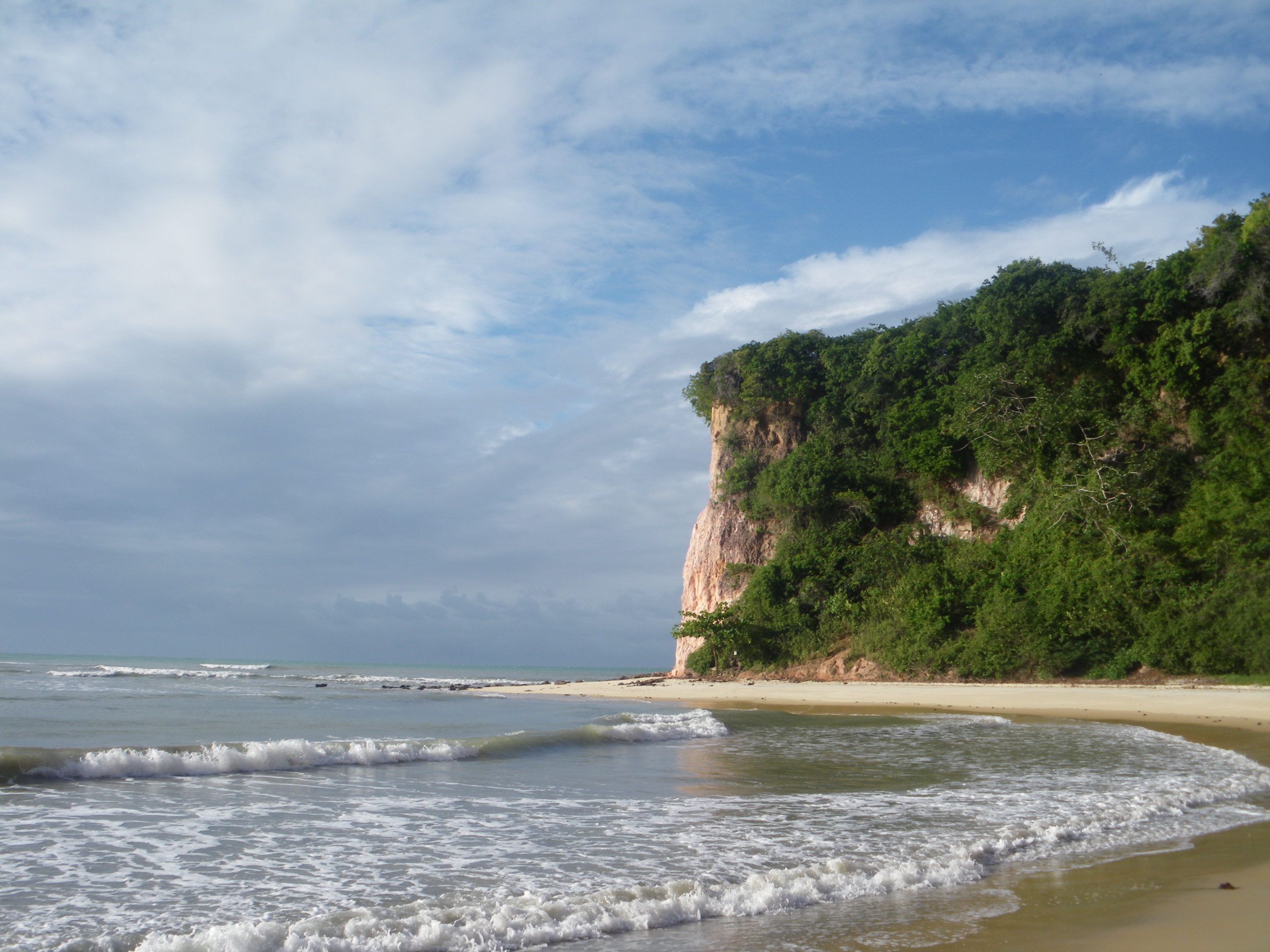
Praia dos Golfinhos is a well-known hang-out for dolphins and we were hopeful to meet some of these fascinating creatures. The about 1 km stretch of beach was mostly deserted with only about 8 other people there, but in the sea motorboats carrying hopeful dolphin watching tourists were regularly making the rounds coming into the bay. No dolphins appeared though, and the tourists we’re distracted by the opportunity to swim near the boat and by the the tour operators who took some (no doubt facebook-profile) photos of them on the boat.
I felt a bit irritated by the boats, imagining the loud motors to be distracting or unnerving to the dolphins. Eventually the boats left, and we decided to take a dip in the sea. The waves are very calm, and the water warm, so much that we ventured deep enough to not be able to stand anymore.
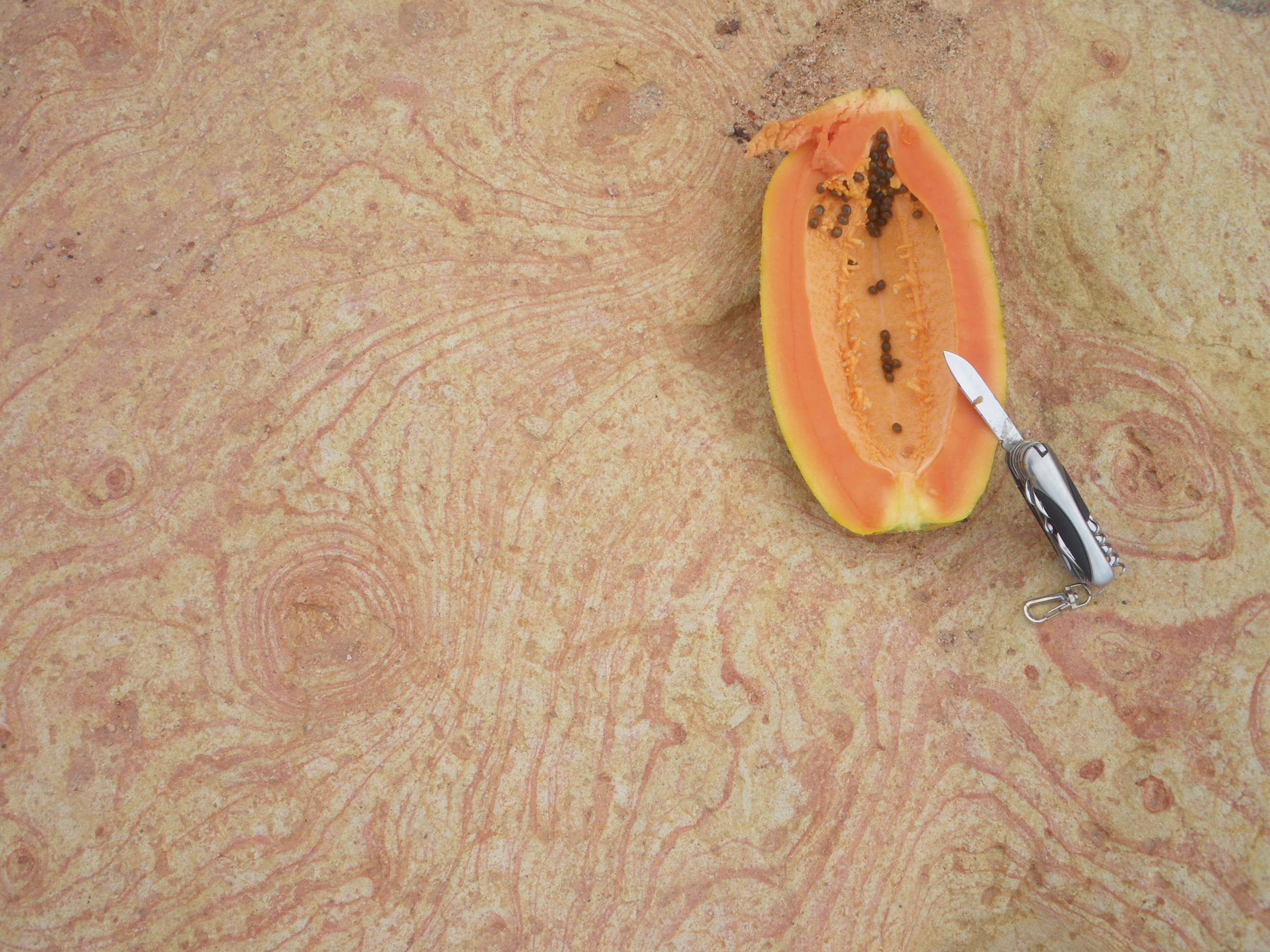
For a second I thought I saw someone swimming quite a bit more ahead. Then, half a minute later, we saw two dolphins coming out of the water, just about 12 meters ahead of us. It was a completely magical event, and I felt a sense of joy and excitement unique to this type of experience. We continued to stay in the water for about 15 more minutes and saw the two dolphins appear about 8 more times. Later, when we walked home, they appeared again, with a boat in the background, heading back to the harbour, completely oblivious to their pr:esence.
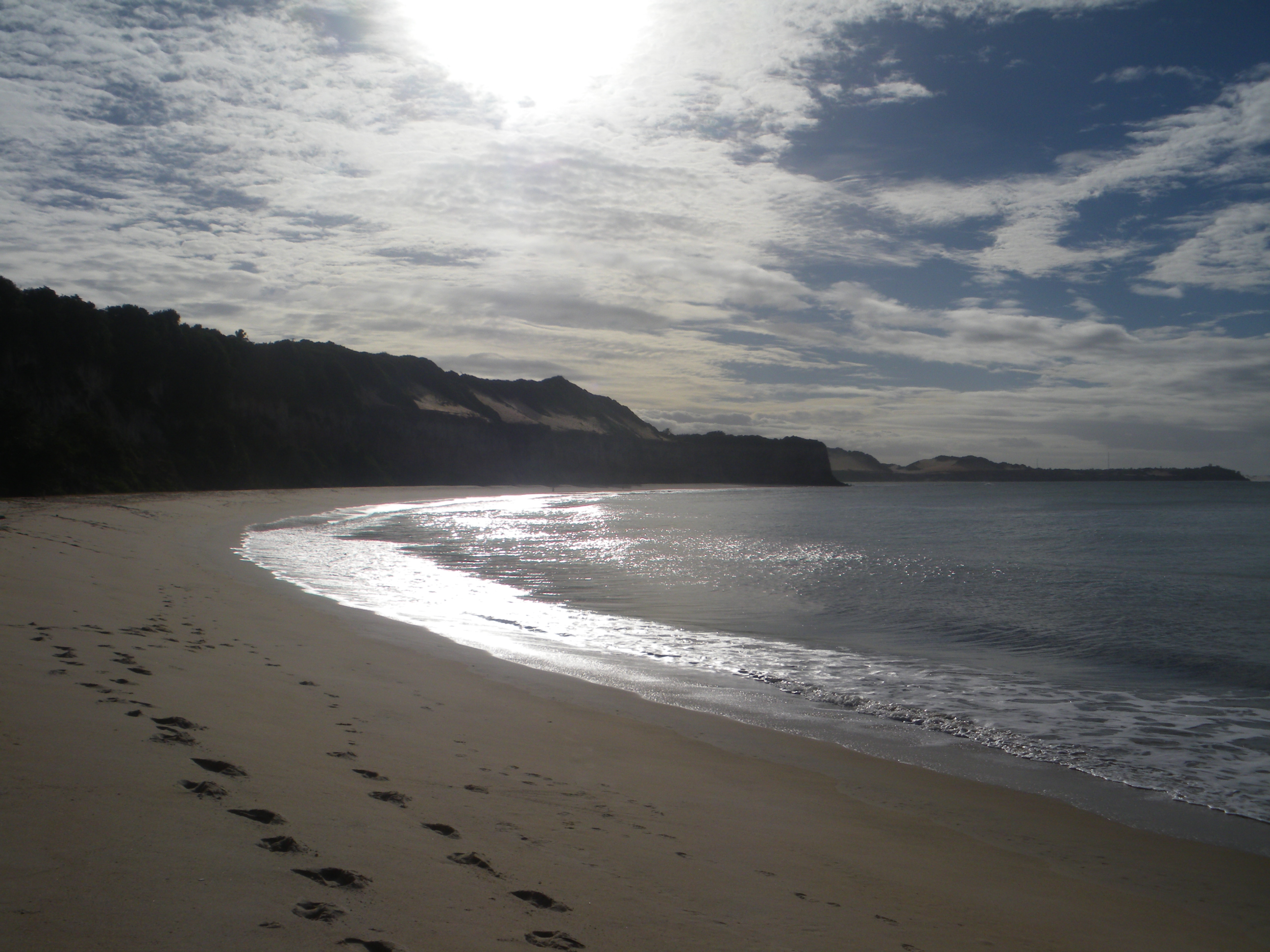
Wednesday 30 June
Projeito dos Criancas (The childrens’ project)
The previous night we met a fellow traveler, who after seeing me practice WingRevolutionmartial arts (which I learned during my stay in Germany) told me about open Capoeira lessons being held the following morning. This was one of these very fortunate coincidences that seem to appear so often during our travels. I’ve been wanting to take some Capoeira lessons but was intimidated by the language barrier and the amount of time it would take to learn anything meaningful. This particular school was literally across our Pousada, and I thought that this was an opportunity not to miss.
So that morning, I got up early and went to the Capoeira school to see what’s up. The place was completely empty, but I decided to go in anyway to see if I could find someone. Inside I met Miguel, who was one of the instructors, and as luck would have it, he spoke English. There and then we had an hour of personal instruction. He showed me the main moves, showed me how they play the main musical instrument and told me some stories about Capoeira.
That night was another hour and half group lesson, with the local Capoeira master, some of the local kids, and a few really good fighters. For the second half of the lesson, everyone gathered in a circle, clapping hands on the beat of drums and instruments with the students (and trainers) taking turns to show of their moves and play-fight against one another. The better fighters were very popular oppononents with everyone wanting to duel against them.
After some time, I was called out to duel in the ring, with this being my first day of learning Capoeira. It was already a very humbling experience to first overcome my internal intertia, fears and doubts and join the school, but now I was also expected to show of the moves that I learned. The master was already in the ring, having dueled with a previous student, and we took hands locked hands (a courtesy before starting the duel) and then started to fight/dance. It was an intense, exciting and eventually euphoric experience and afterwards I gained a new appreciation for the benefits of opening yourself up to experiences which might seem intimidating at first.
The Capoeira (and on alternate days Hip-Hop) school, Projeto das Criancas, was started by a Norwegian woman named Helga as a means of community education and upliftment by training the local children free of charge.
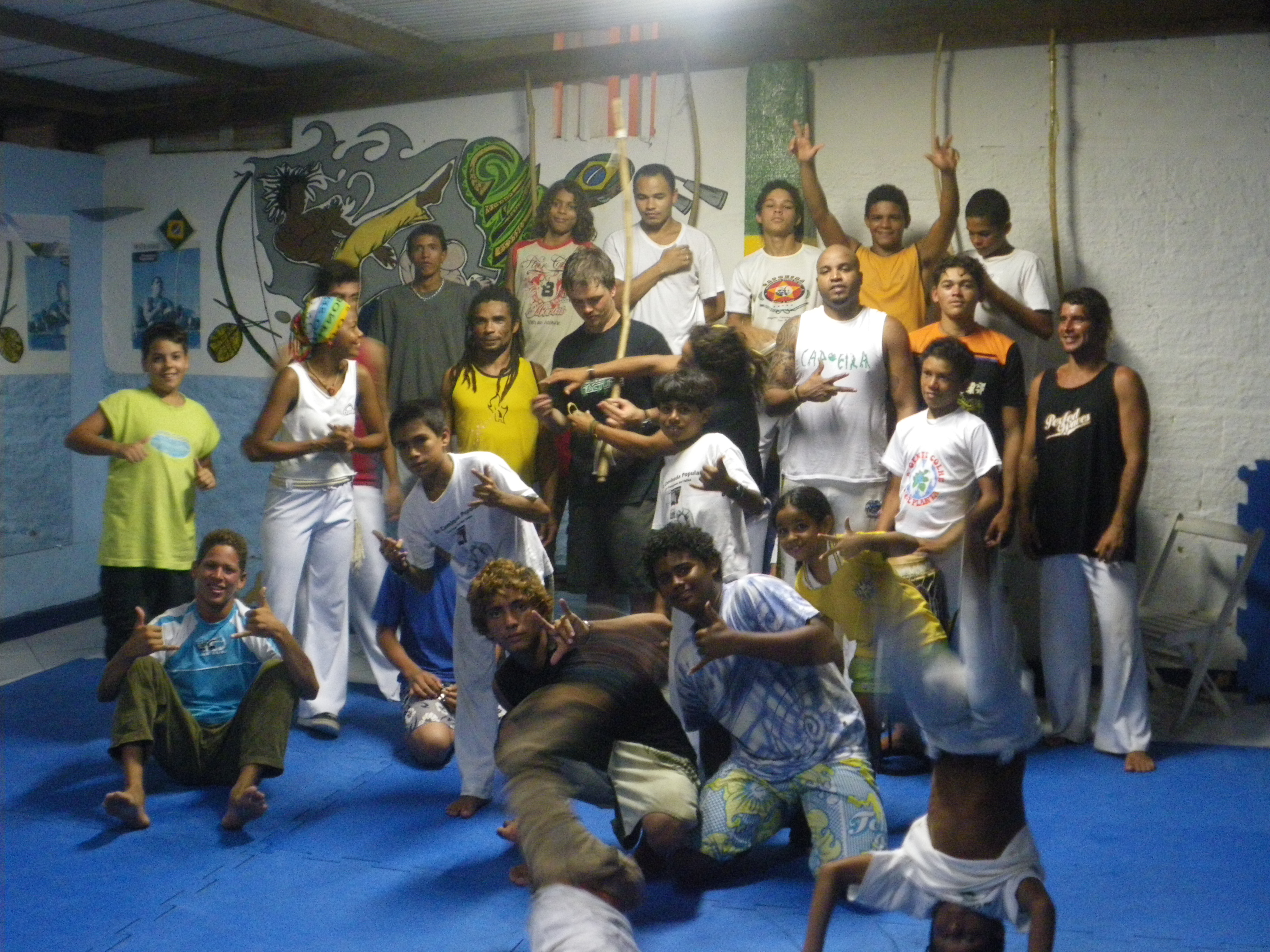
Wrap up
That’s it for the first month of the trip. I’m typing this in a small internet shop in Canoa Quebrada, near Fortaleza in Natal, where we are currently staying. Wednesday the 7th we’re flying to Campo Grande and the Pantanal area. I’ll post another blog entry for July sometime in the beginning of August.
Bom dia!
Hello, I'm JC Brand, software developer and consultant.
I have decades of experience working with open source software, for governments, small startups and large corporates.
I created and maintain Converse, a popular XMPP chat client.
I can help you integrate chat and instant messaging features into your website or intranet.
Don't hesitate to contact me if you'd like to connect.
